
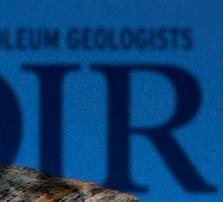
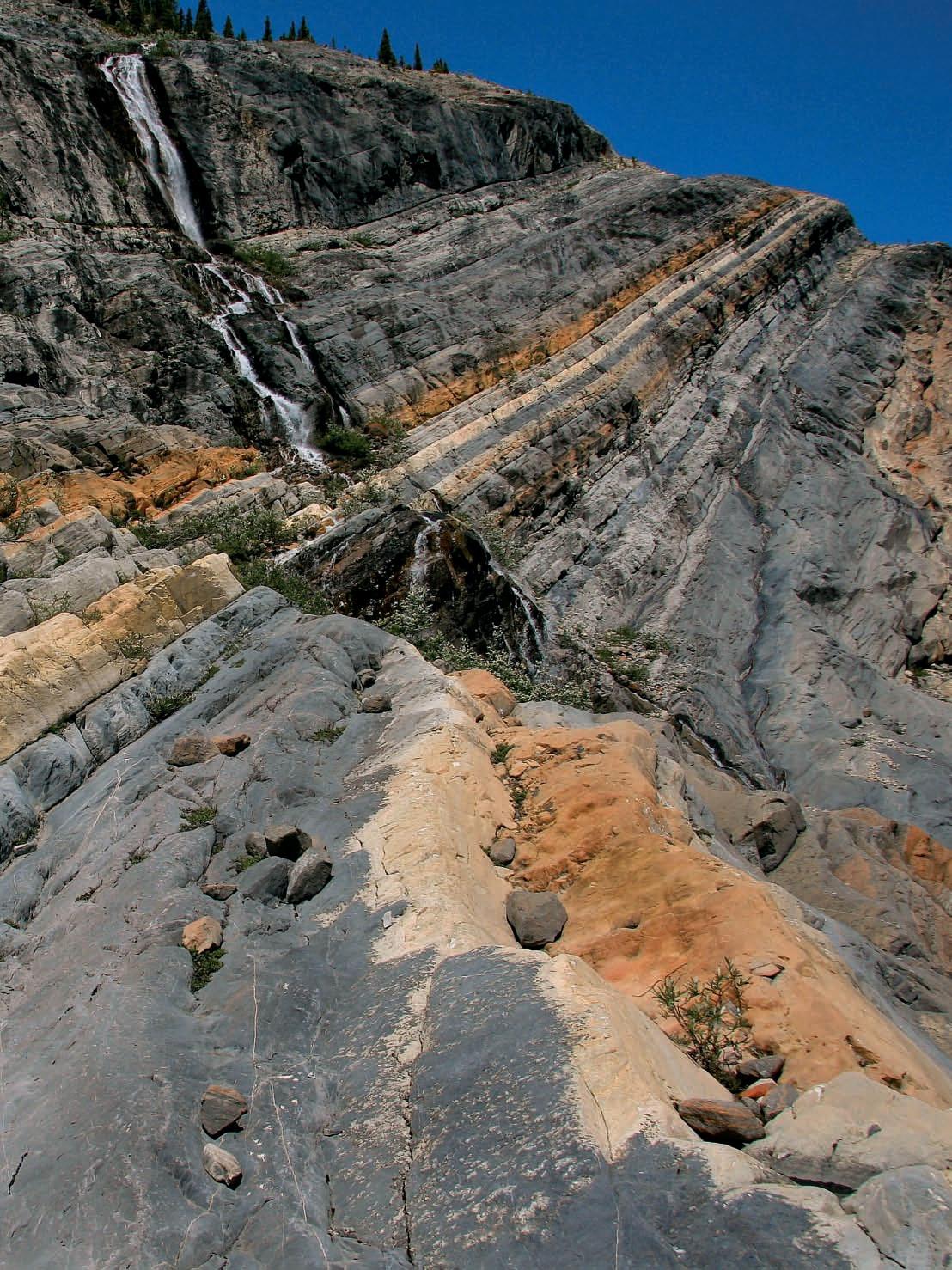
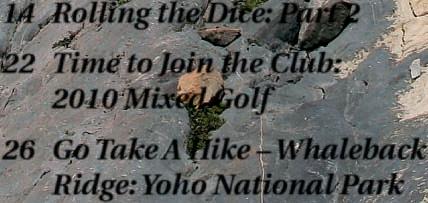








Looking to maximize opportunities in today’s volatile market?
Combine the power of PETRA® and IHS Critical Information including well and log data to define reservoir parameters and determine new opportunities faster and more cost effectively.
Let IHS information solutions improve your decision-making and reduce your risk.
For more information on PETRA visit us at www.ihs.com/reservoirsolutions




CSPG OFFICE
#600, 640 - 8th Avenue SW
Calgary, Alberta, Canada T2P 1G7
Tel: 403-264-5610 Fax: 403-264-5898
Web: www.cspg.org
Office hours: Monday to Friday, 8:30am to 4:00pm
Executive Director: Lis Bjeld
Email: lis.bjeld@cspg.org
Advertising & Sponsorship Coordinator: Alyssa Middleton
Email: alyssa.middleton@cspg.org
Communications Coordinator: Heather Tyminski
Email: heather.tyminski@cspg.org
Member Services Coordinator: Kasandra Klein
Email: kasandra.klein@cspg.org
Registration Coordinator: Dayna Rhoads
Email: dayna.rhoads@cspg.org
Convention Contacts
Convention Manager: Shauna Carson
Email: scarson@geoconvention.org
Convention Coordinator: Tanya Santry
Email: tsantry@geoconvention.org
EDITORS/AUTHORS
Please submit RESERVOIR articles to the CSPG office. Submission deadline is the 23rd day of the month, two months prior to issue date. (e.g., January 23 for the March issue).
To publish an article, the CSPG requires digital copies of the document. Text should be in Microsoft Word format and illustrations should be in TIFF format at 300 dpi., at final size. For additional information on manuscript preparation, refer to the Guidelines for Authors published in the CSPG Bulletin or contact the editor.
Technical Editors
Ben McKenzie Colin Yeo (Assistant Tech. Editor) Tarheel Exploration EnCana Corporation Tel: 403-277-4496 Tel: 403-645-7724
Email: bjmck@telusplanet.net Email: colin.yeo@encana.com
Coordinating Editor
Heather Tyminski, Comunications Coordinator, CSPG Tel: 403-513-1227, Email: heather.tyminski@cspg.org
ADVERTISING
Advertising inquiries should be directed to Alyssa Middleton, Tel: 403-513-1233, email: alyssa.middleton@cspg.org. The deadline to reserve advertising space is the 23rd day of the month, two months prior to issue date.
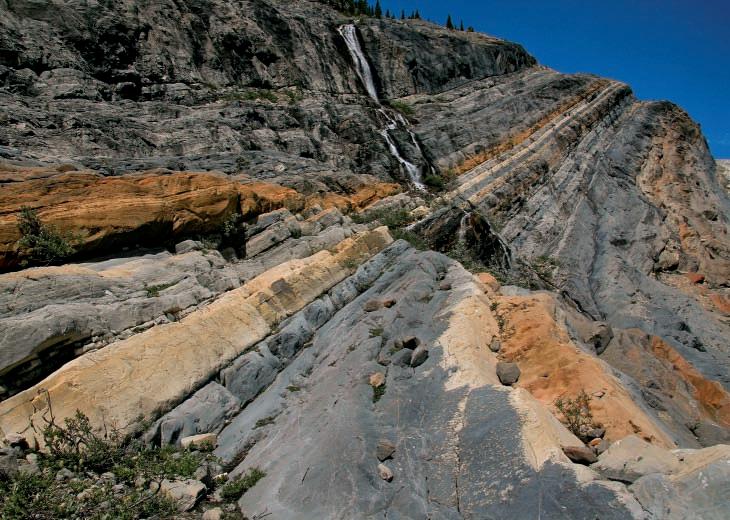
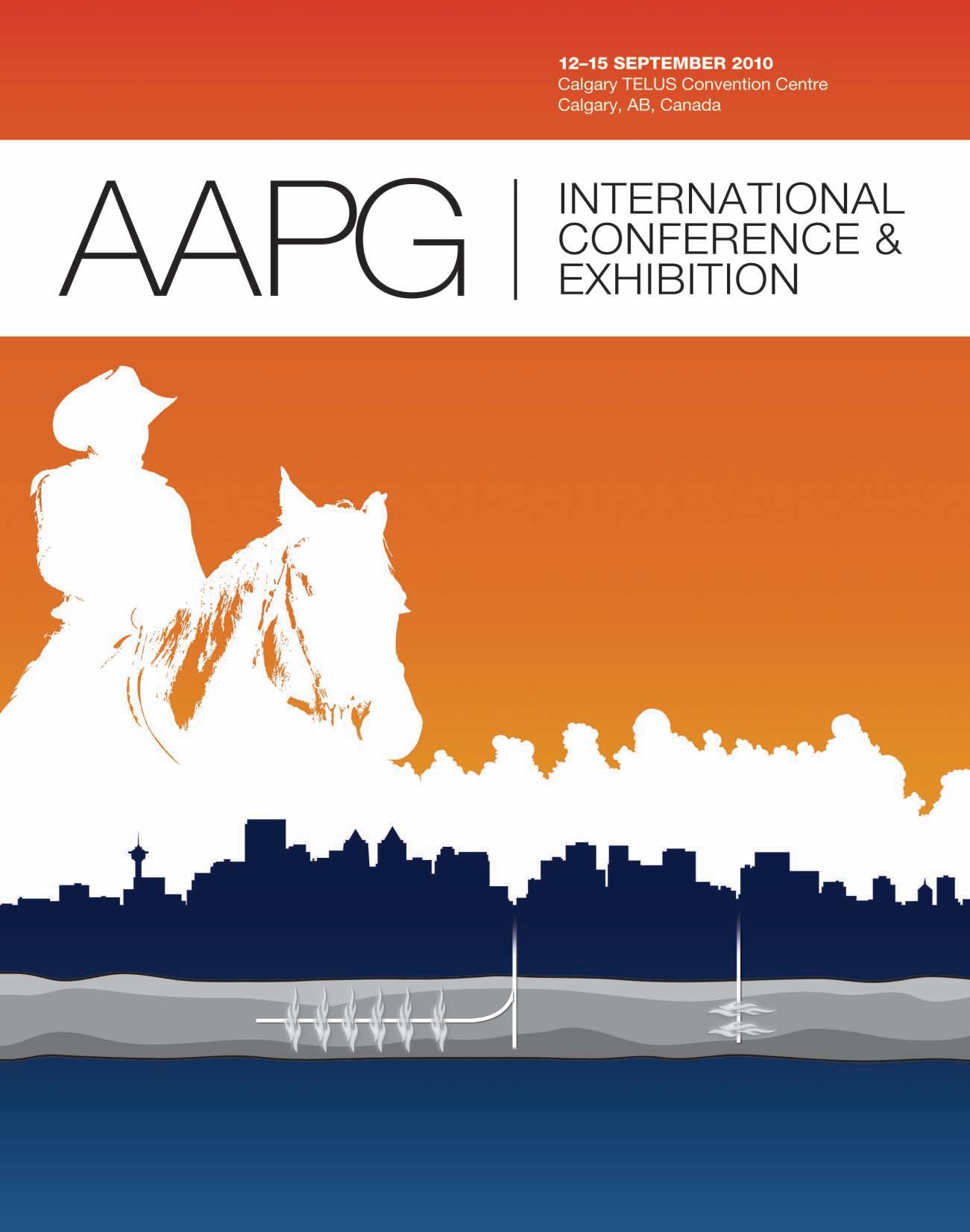



















President John Varsek • Cenovus Energy john.varsek@cenovus.com Tel: (403) 645-5417
Vice President
Kirk Osadetz • Geological Survey of Canada, Calgary kosadetz@nrcan.gc.ca Tel: (403) 292-7022
Past President
Graeme Bloy • Canada Capital Energy Corporation gbloy@capitalenergy.ca Tel: (403) 975-5784
Finance director
Greg Lynch • Shell Canada Ltd. greg.lynch@shell.com Tel: (403) 691-3111
assistant Finance director
Darren Aldridge • Baker Hughes darren.aldridge@bakerhughes.com Tel: (403) 537-3505
Program director
Scott Leroux • EnCana Corporation scott.leroux@encana.com Tel: (403) 645-2000
assistant Program director
Brett Norris • TransGlobe Energy Corp. brettn@trans-globe.com Tel: (403) 264-9896
serVice director
Ayaz Gulamhussein • NuVista Energy Ltd. ayaz.gulamhussein@nuvistaenergy.com Tel: (403) 538-8510
assistant serVice director
Richard Thom • Core Laboratories Canada Ltd. richard.thom@corelab.com Tel: (403) 250-4052
outreach director
Mike DesRoches • Talisman Energy Inc. mdesroches@talisman-energy.com Tel: (403) 513-6843
assistant outreach director
Steve Dryer • Consultant whiskeyjackresources@telus.net Tel: (403) 969-2292
communications director
Stephen Hubbard • University of Calgary steve.hubbard@ucalgary.ca Tel: (403) 220-6236
assistant communications director
Jim Barclay • ConocoPhillips
Jim.E.Barclay@conocophillips.com Tel: (403) 532-3889
executiVe director
Lis Bjeld • CSPG lis.bjeld@cspg.org Tel: (403) 513-1228
A message from the CSPG Vice President, Kirk Osadetz
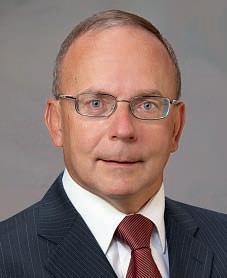
Belonging and Volunteering – “Advisable and helpful” components of professional development and practise.
“Before … the Alberta Society of Petroleum Geology (ASPG)* there was little opportunity for geologists to compare notes or swap data. In fact this trend was ‘taboo’ or even forbidden Geologists were the first to realize that a liberal exchange of results from exploration and geological data, particularly stratigraphical, was advisable and helpful to all parties concerned.
– John Allan”
Professor Allan, founding ASPG vicepresident, was a man to choose words carefully, and it is worth pondering his intentions when he uses “advisable and helpful.” There is no debate that sharing materials, data, and ideas, whether in response to regulation or as the highest standard of professional practise is helpful. Much of what we share is so familiar that we treat it like the air we breathe, or because we now commonly access technical and scientific information through excellent commercial well data websites we often overlook its provenance. It is easy to forget how well constructed and prescient regulation and diligent corporate compliance ensure that geoscience data and materials are preserved for future common use. Where would we be without the core research facilities or access to well logs? I know several instances when corporations have resorted to public sources following the loss of corporate memory and materials.
But why should such sharing be advisable? Don’t we impair corporate advantage when we give away not only data, but devote staff time to informing others? Pr actise and experience show decisively that co-operation and sharing is beneficial, not just for individuals, but for corporations as well. The proof is in the
*The Alberta Society of Petroleum Geology, established in 1927, became the Canadian Society of Petroleum Geologists in 1973.
product as exemplified by our Joint Annual Convention.
May brought GeoCanada 2010 to Calgary. This is when the Joint Annual Convention (JAC) is sized “XXL.” Today you might be filing short-course notes, e-mailing a poster presenter, or reading abstracts of the talks you had hoped to attend, but which were unavoidably scheduled simultaneously. We all marvel at the committee members; oral, poster and core workshop presenters; short course and field trip leaders; omnipresent CSPG office staff; and exhibitors whose efforts, most of it volunteered, provided the largest and most diverse Canadian geoscience meeting of the decade. Our appreciation and thanks to everyone for a job well done. We also thank the JAC Committee and our sister geoscience organizations. We especially thank the delegates, for there would be little motivation to stage so elaborate an event to address an empty hall or smile politely at the lonely poster presenter across the aisle. Yet, GeoCanada 2010 could not have happened without the active sp onsorship, participation, and support of companies, government agencies, and academic institutions. They not only supported and financed JAC activities, but also through their activities, permission, and effort that our members can disseminate corporate learning and obtain partner permission to show key data. Without this sponsorship in kind the meeting would be much the poorer. While it is the mandate of government and academia to publicize their work, our private-sector employers are acting vigorously to share professionally and scientifically in the spirit of John Allan’s sentiment. Th ank you all for your participation and support.
There is a great continuity between sharing and receiving peer comment
(Continued on

Are you practicing geology or geophysics without a license? Did you apply to APEGGA when you first graduated only to be assigned a number of confirmatory exams? Did you decide to give up? Well, as the old cornflakes commercial used to say, “Try us again for the first time!”
Why? Because things have changed. Important things. For example, your experience. Back in the day, an applicant’s transcript was assessed against a list of 30 science and geoscience requirements — with 16 specified subjects and 14 more from a narrow range of options. But you have a lot more experience now. And your experience counts. And your experience will be taken into consideration by today’s Board of Examiners.
If you are practicing geology or geophysics in Alberta, and it’s been a while since you first applied to APEGGA, or if you have never applied, it’s time to consider doing so now.
Your Experience Counts. Visit www.apegga.org for more information or call Mark Tokarik, P.Eng., Director, Registration, Bill Santo, P.Eng., Assistant Director, Registration or Park Powell, P.Eng., Assistant Director, Registration at 426-3990 or 1-800-661-7020.
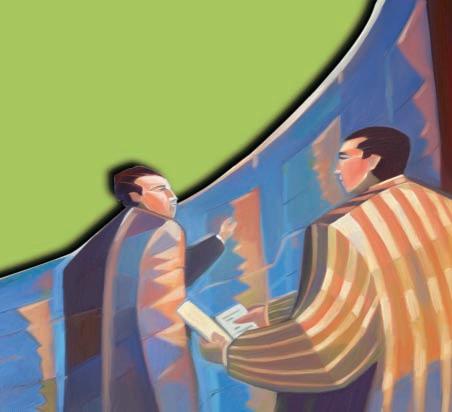

CORPORATE MEMBERS
APACHE CANADA LTD
BAkER ATLAS
CANADIAN NATuRAL RESOuRCES LIMITED
CASEY & ASSOCIATES
CENOVuS ENERGY INC.
CONOCOPHILLIPS CANADA LIMITED
DEVON CANADA CORPORATION
FuGRO AIRBORNE SuRVEYS CORP
geoLOGIC systems ltd.
HuSkY ENERGY INC.
IHS
IMPERIAL OIL RESOuRCES
LARIO OIL & GAS COMPANY
MJ SYSTEMS
MuRPHY OIL COMPANY
NEXEN INC
PETROCRAFT PRODuCTS LTD
PuLSPETROL
PROVIDENT ENERGY LTD
RPS ENERGY
SHELL CANADA LIMITED
SPROuLE ASSOCIATES LIMITED
SuNCOR ENERGY INC
TOTAL E&P CANADA LIMITED
TOuRMALINE OIL CORP
(...Continued from page 5)
regarding scientific contributions and the decision-making processes in a family or community. Both can be constructive and enlightening methods for affirming and correcting ideas and intentions. Similar benefits come when we volunteer in CSPG scientific or social activities. The CSPG provides a place where we can learn from the insight or experience of others, broaden our perspectives, and perhaps gain new skills and responsibilities that prepare us for greater responsibility in our careers.
Continuing education at the CSPG can be d elivered formally through our excellent courses and field seminars, but many people have acquired necessary skills and demonstrated their suitability for greater corporate responsibility as a result of experiences gained as volunteer contributors to CSPG programs and activities. Your membership and participation are beneficial not only to you, but to the company you work in. Many companies recognize this and the breadth and depth of individual and corporate donations in kind confirms that the CSPG provides an e xcellent path for personal and corporate development. Individual and corporate membership and participation is truly both ‘advisable and helpful’, not just for you, but for your employer too.
This fall we will be having a Membership drive. As professionals we ask that you consider making renewal or application for CSPG membership a personal “bestpractise.” You don’t have to wait for the fall; you can apply today through the website or call the office. Let nonmembers know that we need them and that they need us.
All of us are familiar with an additional be nefit of sharing and giving: fulfillment. Our sharing and giving creates not just good work in the world; it also can be our connection into our community and a source of personal satisfaction. One activity that many individual and corporate members and sponsors can be very satisfied with is the success of Canadian International Year of Planet Earth (IYPE) activities. I’m writing just prior to Earth Day 2010, in the wake of earthquakes and volcanic eruptions that altered the lives and business of hundreds of thousands, if not millions. These events make the work
and success of IYPE more important, especially since most media o utlets have turned to their meteorologists as the “talking heads” about geological events and processes. There could be no clearer sign that our science and profession require a higher public profile and greater societal awareness. The IYPE activities, which were financially supported by CSPG and several companies, among others, has resulted in diverse and effective activities and products that heighten awareness of geosciences in life and society. I urge you to visit websites for the national committee, http://www.earthsciencescanada.com/, and the international program, http:// www.yearofplanetearth.org/. Among IPYE’s tangible products are a series of u seful resources available from the IYPE website and http://www.gac.ca/ populargeoscience/. A handsome coffeetable book, Four Billion Years and Counting, will appear subsequently http:// www.earthsciencescanada.com/4by/.
We can all advance our personal and corporate goals by ensuring that our membership is both current and active. We have much to do if Canada and Canadian society are to recognize us, our employers and our work as “advisable and helpful” to the life, health, prosperity, and environment of our country and the planet.
Interested in learning more about university Outreach? Join the CSPG university Outreach Facebook group.
AS OF MAY 12, 2010
SPEA k ER
Lynn N. Hughes
u ni ted State District Judge AAPG Distinguished Lecturer
11:30 am
tue sday, June 8, 2010
c al gary t e L us c onvention c en tre c al gary, a lb erta
Please note:
t he c ut-off date for ticket sales is 1:00 pm, t hu rsday, June 3, 2010.
csPg member tic ket Price: $38.00 + gst.
non - member tic ket Price: $45.00 + gst.
Ea ch CSPG Technical Luncheon is 1 APEGGA PDH credit. Tickets may be purchased online at https://www.cspg.org/eSeries/ source/Events/index.cfm.
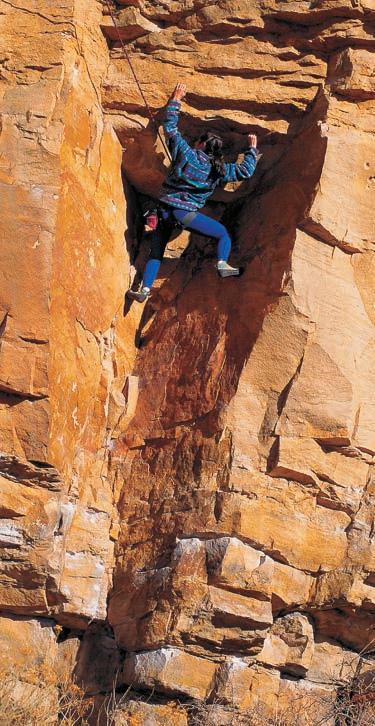
Mixing principles and examples with economics and anthropology, a thoughtful and practical perspective on integrity is developed. Often in ethics – as in science – identifying the problem is harder than knowing the solution, making recognition the critical first step in ethical analysis.
Good things, like cooperation, can become negative when they are not tethered to an external reality and the larger society. Also, because our ideology and psychology can blind us to the nature of our choices, we n eed balance, feed-back, and thought to resolve the ethical aspects of the ordinary and unfamiliar.
Si nce 1985, Lynn N. Hughes has been a judge with the United States District Court, Houston. Before that (1979-1985), he was a judge with the Texas Civil District Court. Hughes was Adjunct Professor at South Texas College of Law (1973-2003) and at the University of Texas (1991, 2000). He is a member of the
Webcasts sponsored by
Judicial Advisory Board, Law and Economics Centre, George Mason University School of Law; Advisory Board, Houston Journal of International Law since 1980 (Chair, 19891999); American Anthropological Association; and Council on Foreign Relations. He received his B.A. from the University of Alabama, his J.D. from the University of Texas Law School, and his LL.M. from the University of Virginia School of Law.
In accordance with Article VI, subparagraph (a) of the By-Laws 2003, the Nominating Committee hereby calls for Nominations to Stand for Election to the 2011 Executive Committee of the Canadian Society of Petroleum Geologists.
Nominations can be made in two ways:
1) Formal Nominations are to be made in writing, signed by at least twenty-five members in good standing and endorsed by the nominee who is consenting to stand for office. Qualified candidates will be published on the CSPG website and the election will take place on January 13th, 2011 at the AGM.
2) Informal Nominations can be made via email or letter; please confirm that the nominee is willing to stand for the office of choice and send to CSPG Office to the attention of the Past President. Candidates nominated in this fashion will be considered by the Nominations Committee.
The Canadian Society of Petroleum Geologists asks that you assist in filling the following positions: Vice President, Assistant Director of Finance, Assistant Service Director, Assistant Program Director, and Assistant Outreach Director.
Interested parties should contact the office for details and general requirements of service on the Executive. Call for Nominations closes September 15th, 2010.
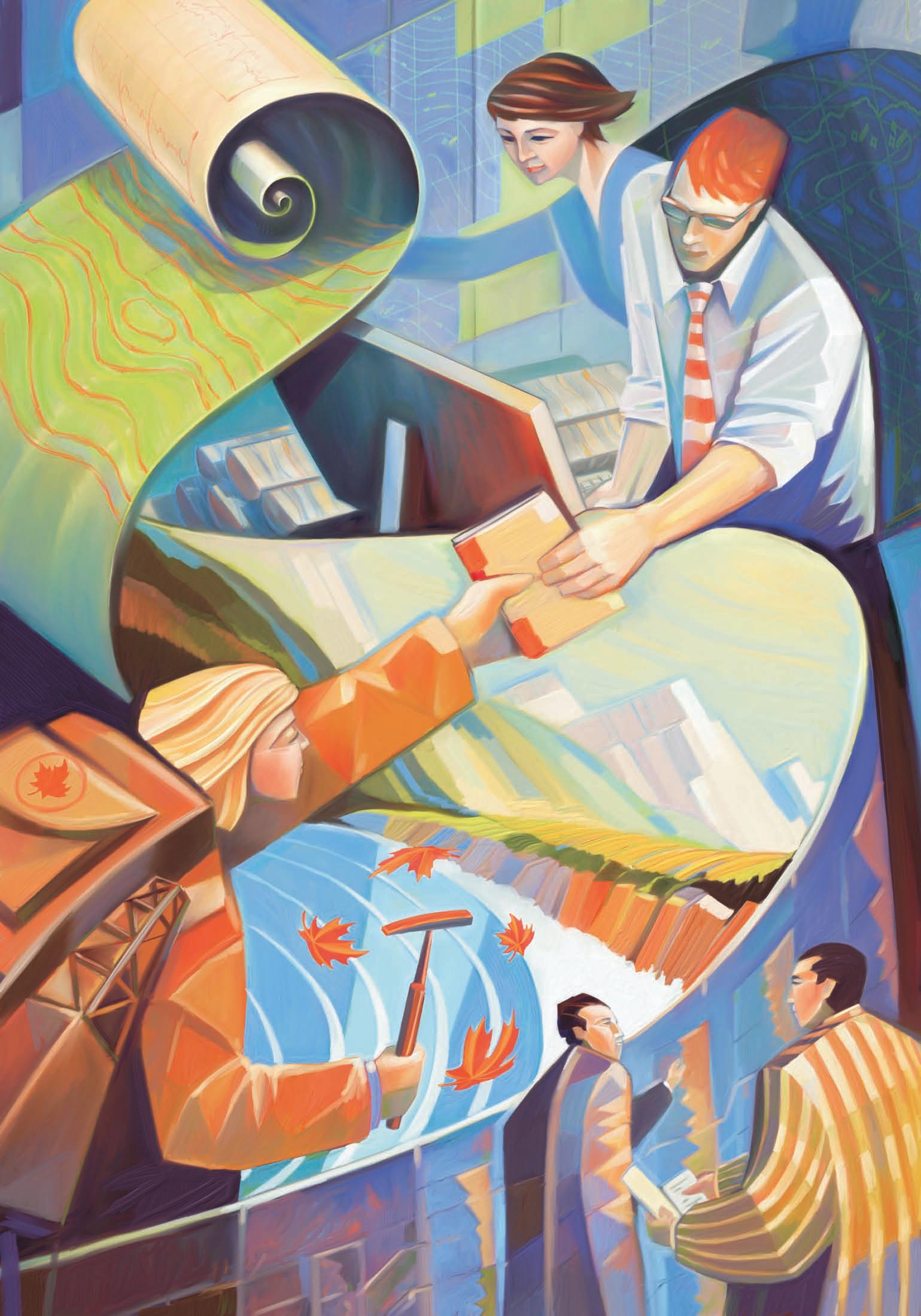

4th Annual Education Week
October 25 - October 29, 2010
www.cspg.org/education/education-week.cfm
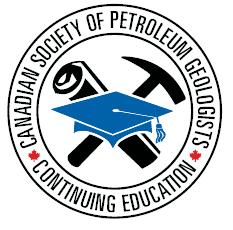
Instructor: Dr. Basim Faraj, Unconventional Gas Specialist at Talisman Energy
Description: This one-day course will introduce the fundamental differences between conventional hybrid and shale gas plays. Source and reservoir rock attributes of shale gas plays will be discussed as well as GIP calculations, water, oil and gas saturations, essential laboratory analysis, and optimum geochemical and mineralogical parameters. Slickwater completion lessons learned from the US will be detailed. Canadian plays will be highlighted and discussed.
Instructor: Andrew Miall, Professor of Geology, University of Toronto
Date: October 27-28, 2008 Course Fee: CSPG Member Earlybird: $750 + GST / CSPG Member: $825 + GST
Description: The focus of this two-day lecture course will be on the reservoir architecture and sequence stratigraphy of fluvial systems and will contain descriptions of fundamental basinal controls on fluvial systems. Information and ideas presented in the course will contribute to the development of fluvial sandstone production and exploration models.
Instructor: Dr. James Dixon, Geological Survey of Canada
Description: The objective of this half-day course is to help explorationists understand the regional stratigraphic setting of Triassic rocks and how this can be used in a more local exploration program. The course consists of two lectures, some correlation exercises, and an examination of several cores that illustrate various facies types and/or significant stratigraphic surfaces.
Instructor: Dr. Octavian Catuneanu, Professor in the Department of Earth and Atmospheric Sciences at the University of Alberta
Description: This workshop presents the concepts and practical applications of sequence stratigraphy for petroleum exploration and production. All concepts are illustrated with field examples of seismic, well-log, core, and outcrop data. In-class exercises emphasize the recognition of sequence stratigraphy surfaces and systems tracts on well-log cross-sections, seismic lines, and outcrop profiles.
Instructor: Andrew Miall, Professor of Geology, University of Toronto
Date: October 29-30, 2008 Course Fee: CSPG Member Earlybird: $750 + GST / CSPG Member: $825 + GST
Description: A practical course designed to assist the petroleum geologist in the identification of different types of sequence, based on generating mechanisms. The sequence architecture in a given basin may reflect the action of several simultaneous processes interacting locally to globally over a wide range of time scales.

For more information and to keep up to date with added Courses please see: www.cspg.org/education/education-week.cfm
tinadave@telusplanet.net For additional information, contact Tina Donkers at:
Choose from over 50 exciting field seminars, short courses and online programs all designed with the goal of helping you explore and better understand the science of this industry. Please see the AAPG website for complete descriptions and registration information. Below are the highlights of courses coming up very soon. Make your plans now before seats get filled!
Creative Petroleum Exploration
Location: Calgary, AB, Canada, with the AAPG International Conference & Exhibition
Instructors: Edward Beaumont and Doug Strickland
Image Log Interpretation
Location: Calgary, AB, Canada, with the AAPG International Conference & Exhibition
Instructor: Laird Thompson
Writing for the Bulletin – A Primer in Scientific
Writing for Refereed Geoscience Journals
Location: Calgary, AB, Canada, with the AAPG International Conference & Exhibition
Instructor: Gretchen Gillis
SEPT 23-30
16-19
8-12 OCT 4-8
Sedimentology and Sequence Stratigraphic Response of Paralic Deposits to Changes in Accommodation: Predicting Reservoir Architecture, Book Cliffs, Utah
Location: Colorado/Utah
Leaders: Keith Shanley, Michael Boyles
Modern Terrigenous Clastic Depositional Systems
Location: South Carolina
Folds, Faults and Hydrocarbons in the Southern Canadian Cordillera – Principles and Practices Combination Short Course/Field Trip
Location: Calgary, AB, Canada, with the AAPG International Conference & Exhibition
Instructor: Peter Jones
FALL EDUCATION CONFERENCE 2010
– Theme: Unconventional Resources
Location: Houston, Texas
Instructor: Multiple experts!
Application of Structural Geology in Prospecting in Thrusted and Extensional Terrain
Location: Las Vegas, NV
Instructors: Chuck Kluth and Wayne Narr
Leader: John Warme OCT 2-9 OCT 10-13
Leader: Walter Sexton
LAUNCH DATE JUN 1
Renewable & Non-Renewable Resources
- Overview & Integration: A Renewable Energy Certificate Course
Instructor: Theresa Coffman
JULY 7-14
JULY 11-18
JULY 13-16
Modern Terrigenous Clastic Depositional Systems – Field Seminar
Location: South Carolina
Leader: Walter Sexton
Lacustrine Basin
Exploration – Field Seminar
Location: Utah
Leaders: Alan Carroll and Meredith Rhodes Carson
Basic Well Log Analysis – Short Course
Location: Denver, CO
Instructors: George Asquith and Dan Krygowski
Applied Stratigraphy of Paleozoic Carbonate Platforms; Facies, Cycles, Sequences, Reefs, Reservoirs
Location: Nevada
Introduction to Geological Reservoir Characterization
Instructor: Roger Slatt SEPT 13DEC 17
JULY 17-23
JULY 19-24
JULY 26-30
Seismic Interpretation of Compressive Structures: Field Seminar
Location: Calgary area, Canada
Leaders: John Shaw and Frank Bilotti
Fractures, Folds, and Faults in Thrusted Terrains: Sawtooth Range, Montana – Field Seminar
Location: Great Falls, MT
Leaders: William Hansen, Steve Boyer, Chuck Kluth and Jim Sears
Complex Well – Core Competency: An Asset Team Program – Short Course
Location: Dallas, TX
Instructor: Bob Knoll
For more information on any AAPG Education programs, call 918-560-2650 or toll-free 1-888-338-3387, or visit www.aapg.org/education.
Miocene submarine fan seismic geomorphology and reservoir architecture revealed by 3-D seismic and visualization, deepwater toethrusted
SPEA kER
Dr. Trent Rehill Manager, Geology kulczyk Oil Ventures
12:00 noon
Wednesday, June 16th, 2010 encana amphitheatre, 2nd Floor ea st end of the ca lgary tower complex 1st street and 9th avenue s.e. ca lgary, alberta
Exploration on the northwest Borneo margin has been extremely active since Malaysia’s awards of deepwater blocks in the late 1990s, with several important discoveries such as kikeh, kakap, Gumusut, Malikai, ub ah, and ke babangan.
In this paper I outline what I believe to be the key aspects for petroleum exploration in an area that lies in water depths of between 1,000-2,000m. The area is currently dominated by basin-verging, thrust anticlines; however, the turbidite reservoirs have depositional characteristics similar to systems deposited in passive margin settings.
The turbidite systems in this area comprise successions of reservoir and non-reservoir facies arranged in a variable array of stacking patterns. An upward succession of reservoir architecture styles suggests a gradual period of lower slope to basin floor profile evolution. The section evolves
upward from laterally continuous, well developed sheet / lobe sands interpreted to have been deposited in a largely unconfined basin-floor setting to more channelised fan lobes deposited in foreland basin setting followed by amalgamated channels / lobes within a series of lower slope – basin plain channel-levee complexes influenced increasingly by the penecontemporaneous structuration.
The application of 3D volume interpretation
Sponsored by
techniques such as: optical stacking, multiple attribute rendering, and horizon propagation to develop depositional models and generate prospects strongly contributed to the identification of a number of largescale geometries and seismic facies within the basin-filling stratigraphy. Depositional geometries within these fan systems are illustrated with seismic geomorphology, well logs, and descriptions of analog outcrops.
(Continued on page 12...)































































































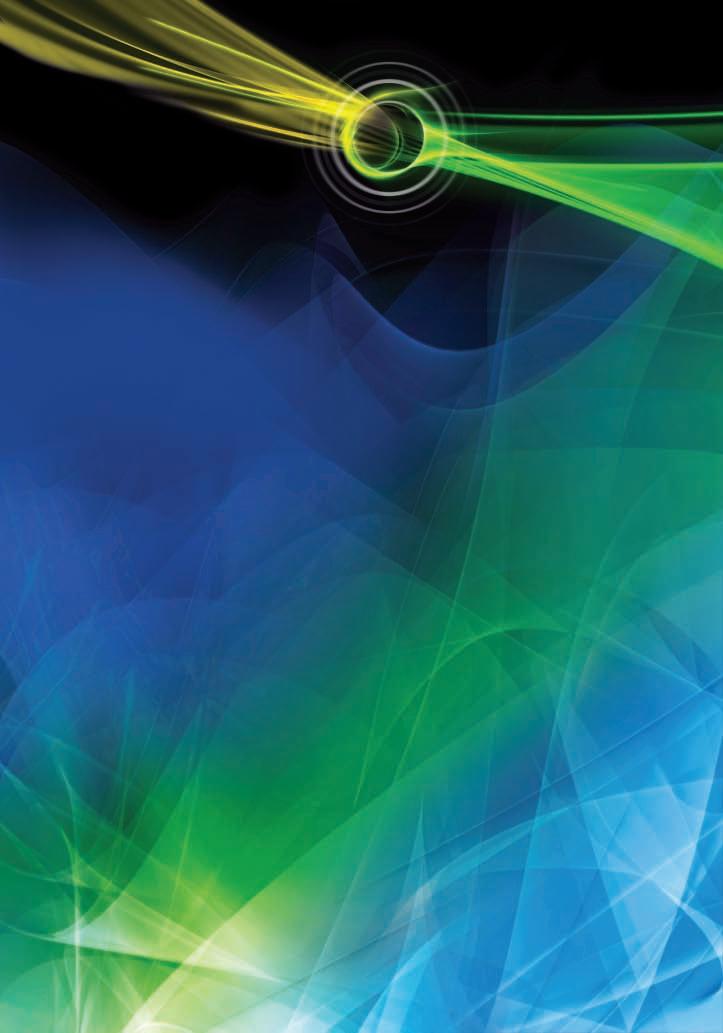



Trent Rehill received his Honors B.Sc. from the University of Manitoba in 1992, and his Ph.D. from Dalhousie University in 1996. Throughout his academic and professional career he has been interested in combining geology with geophysics. His interest in deepwater exploration and development stems from more than 15 years working for Chevron, Murphy Oil, Woodside Energy, the Artumas Group, and Kulczyk Oil Ventures. He has worked in
West Africa, North Africa, East Africa, South East Asia, Eastern Europe, the Middle East, and Canada focusing on a multidisciplinary subsurface approach combining seismic geomorphology, s edimentology, structural geology, well logs, and descriptions of analog outcrops.
INFORMATION
There is no charge to attend this talk. Please bring your lunch. The facilities for the talk are provided complimentary of EnCana and


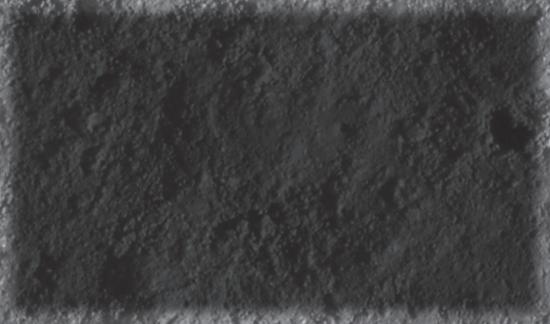
FARHATHYDERI,P.Geol President
226CopperfieldBlvd.S.E. Calgary,ABT2Z4R6 Tel 4037260666
Fax4034515380 Cell4038192516
farhat@sableconsultants.com SABLECONSULTANTS.COM ConventionalWellsHeavyOil/OilSands

refreshments by Geochemtech Inc. For further information or if you would like to give a talk, please contact Bob Potter at (403) 863-9738 or ropotter@telusplanet.net or Trent Rehill at (403) 606-6717 or trehill@kulczykoil. ca. Or visit our new Face Book page (“CSPG International Division”).
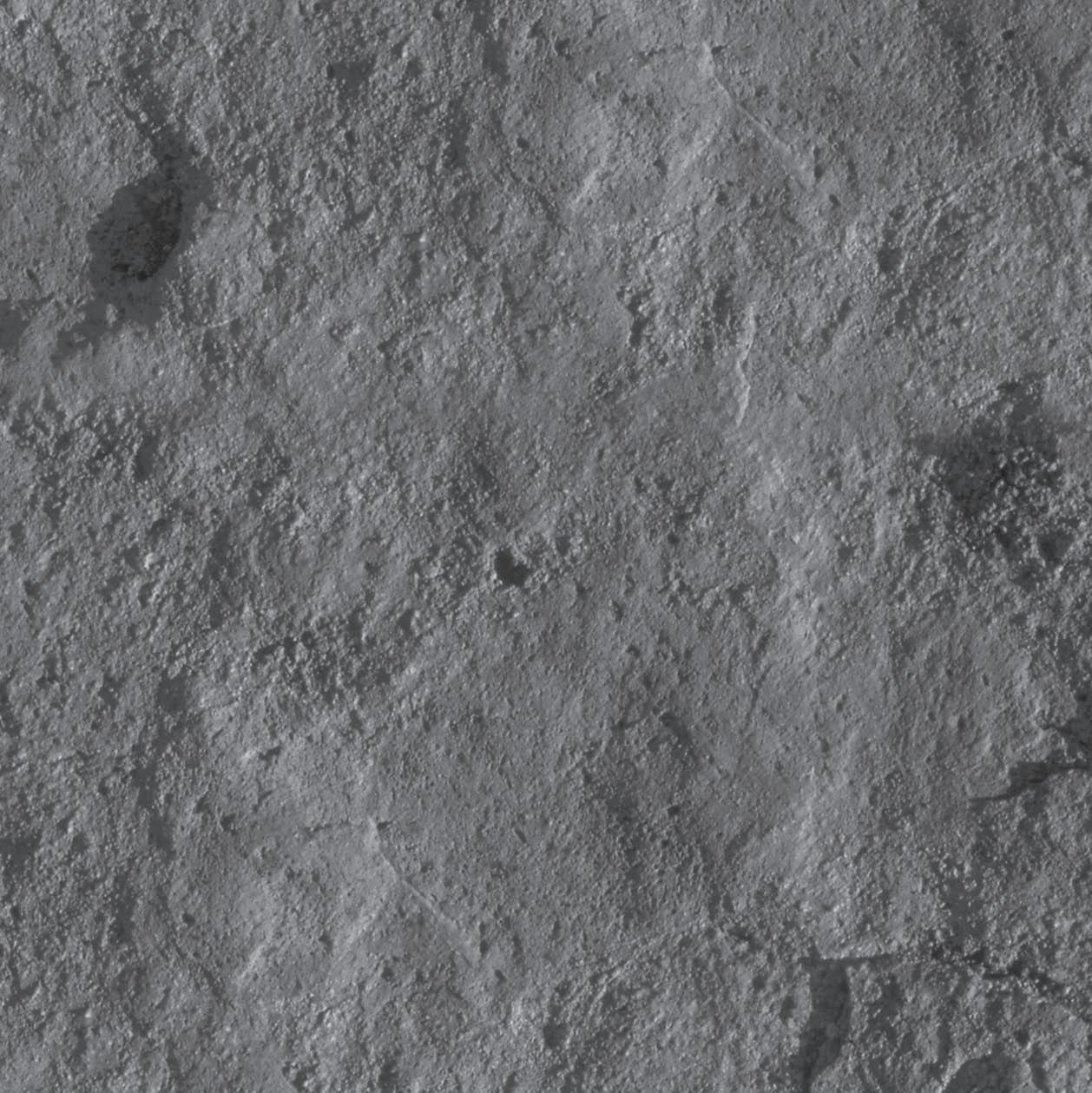
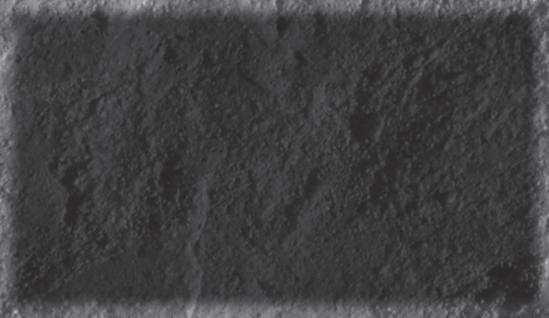
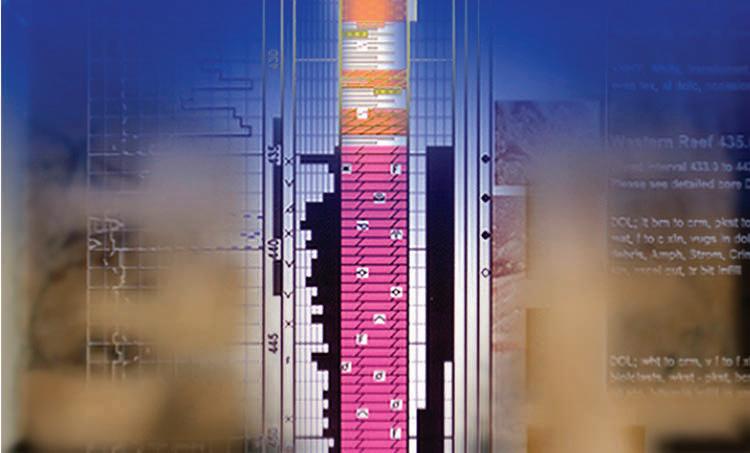



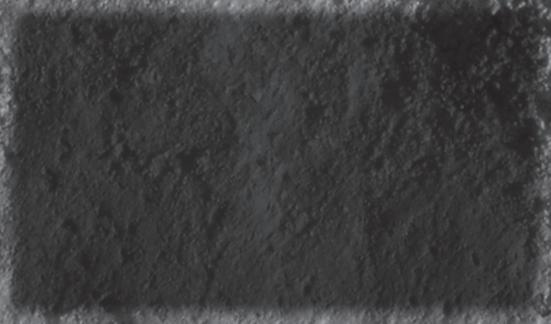



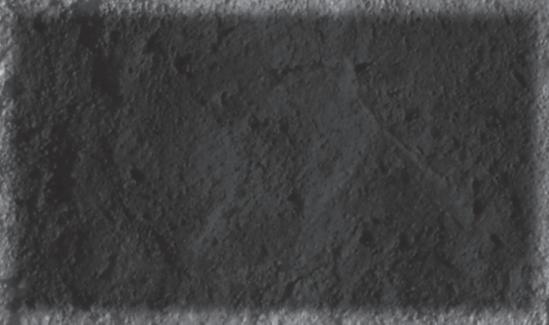

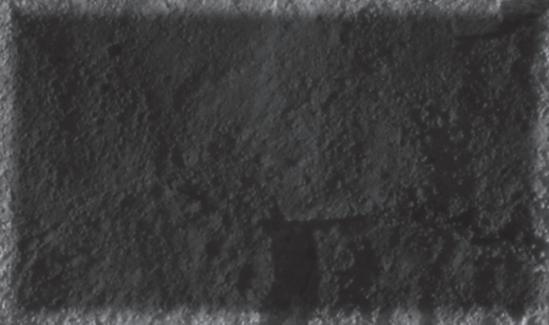
SPEA kER
Wayne F. Braunberger
Alberta Palaeontological Society
12:00 p.m. – 1:00 p.m. tuesday, June 22, 2010 ca lgary Place 1, room 1116 ca lgary, alberta
The Cardium Formation is a significant hydrocarbon reservoir in Alberta and hence is of considerable economic importance. It is one of the most intensely studied formations in the Western Canada Sedimentary Basin but is still poorly understood in terms of depositional history, environments of deposition, and correlation of subsurface to outcrop. Workers have concentrated on lithostatigraphy, sedimentology, and more recently the application of sequence stratigraphy in understanding the formation. A thorough review of the paleontological data is a basis for a refined biostratigraphy on which dating and correlation can be b ased. Ammonoids and inoceramid bivalves allow recognition of all biozones from the Middle Turonian – Late Coniacian in strata of the Cardium Formation and immediately underlying (Blackstone) and overlying (Wapiabi) units.
Sediments comprising the Cardium Formation accumulated from the Prionocyclus wyomingensis zone through the Scaphites preventricosus zone. No ammonite zones are absent; however, zones may be partially absent in individual sections. In the Southern Foothills the Turonian/Coniacian boundary occurs in the basal portion of the Leyland Member. Farther north this boundary probably occurs within the Moosehound Member. Prionocyclid a mmonites have been recovered from several sections in both the subsurface and surface. Scaphites

preventricosus has been recovered from the Leyland Member and ranges up into the basal beds of the overlying Wapiabi Formation. Ammonites referable to the Scaphites preventricosus zone have also been recovered from the Cardium Zone in the Edson Field. Inoceramid bivalves have also been described, confirming the ammonoid zonation.
The biostratigraphic data suggest that the Cardinal Member rather than the Ram Member is the most laterally continuous member of the Cardium Formation in the Southern Foothills. Sandstones of the Pembina River Member of the Pembina Field and the Cardium “A’’ Sand in the Crossfield area are correlative with the Cardinal and basal Leyland members in outcrop. The upper portion of the Leyland Member, the Sturrock Member, and the basal beds of the Wapiabi Formation are correlative with the Cardium Zone of the subsurface. The available data also suggest that the Cardium Formation is diachronous in both west - east and north - south directions. Biostratigraphic correlations indicate that u nconformities within the Cardium Formation may not always represent significant erosional events or chronostratigraphic horizons.
Wayne Braunberger received a B.Sc. (Honours in Geology) and M.Sc. (Biostratigraphy and Sedimentology) from the University of Calgary. He is a member of several technical societies including the CSPG and has been involved with the Alberta Palaeontological Society since its inception and is currently president.
T his event is jointly presented by the Alberta Palaeontological Society, Mount Royal College and the CSPG Palaeontology Division. For details or to present a talk in the future please contact CSPG Palaeontology Division Chair Philip Benham at 403-691-3343 or programs@albertapaleo.org. Visit the APS website for confirmation of event times and upcoming speakers: http://www.albertapaleo. org/.
| by R. E. (Gene) Ballay, Ph.D.
Part 1 of this article was published in the May 2010 issue of the Reservoir.
Uncertainty arises from multiple sources, and includes (among others) the following:
• Calibration data (routine grain density and porosity, special core analyses for ‘m’ and ‘n’, etc.).
• The downhole instruments that are making the actual measurements.
• The assumed interpretive model.
Thomas (1989), of Amoco, performed a detailed study of the accuracy and reproducibility of repeated routine core analyses, and provided the resulting 99% confidence limit shown in Figure 13. In practice, the issue is broader than just the individual core measurements, and also includes compaction adjustments to the core, volumetric differences between the core and log measurements, etc.
In addition to the core calibration data, there is also uncertainty in the borehole wireline / LWD measurements (Figure 14).
In pr actice, particularly in a field when there is legacy data present, these specifications will change with time and tool type. The 6FF40 induction tool, for example, had a skin effect issue below about 1 ohm-m and a signal-to-noise limit above ~ 100 ohm-m. Newer tools will have different limitations.
The Archie exponents present an additional set of issues. Focke and Munn (1987) nicely illustrate the dependence of ‘m’ upon carbonate pore geometry, while ‘n’ is controlled by wettability (Sweeny and Jennings, 1960) and surface roughness (Diederix, 1982). In carbonates, wettability (and hence ‘n’) may vary with pore size (Chardac and others, 1997), and pose an additional challenge, particularly in the transition zone.
Adams (2005) cautions (and illustrates) that quantitative uncertainty definition is more than just using Monte Carlo simulation to vary the inputs to the interpretation model. The largest source of uncertainty may be the interpretation model itself.
Griffiths (2006) brings our attention to the challenges posed by carbonate dual-
• samples are assumed to not change , so that differences reflect
• • σ encompasses 68% of the data,
Deviations are interpreted as Gaussian in
• σ encompasses 95 % of the data
• •
Tabulated confidence limits reflect the 99% limits A 99% level is likely to be in error nature, so that The between tests random variations in the measurement process


single measurement made on the same sample, which falls outside the specified
Figure 14. Wireline Tool Uncertainty


Courtesy Tim Pritchard, BG Group Illustrative Values. Consult your Service Company for locally specific attributes.
porosity systems and potential electrical ‘short circuits’.
Carlos Torres-Verdin observes, “my experience shows that the biasing of apparent resistivity curves due to post-processing (e.g., deconvolution) can be more detrimental to uncertainty than Archie’s parameters, with a conspicuous example being thin, hydrocarbonsaturated intervals experiencing vertical resolution and invasion effects.”
Voss (1998) comments on determination of uncertainty ranges as does Bowers (2003). Summary points include:
• A single interpreter should avoid making estimates on their own. A single interpreter often lacks the needed knowledge to correctly estimate every parameter. In addition, many interpreters have a bias that smaller errors are better and they will appear more knowledgeable about the subject.
• The error must reflect the level of knowledge about the parameters and the data quality.
• A s tandard set of uncertainty ranges must be avoided because there is no standard situation in which to apply them.
• unusual events also pose special problems: Most people have a better recall of unusual events. Therefore, there is a tendency to overestimate the probability of such an event, especially if that event occurred recently.
• An other very common mistake is to allow a very small amount of data to quantify the range of uncertainty. If data sets are small, the ranges probably need to be increased.
• Bo undary Conditions: Water saturation must lie between zero and one; if the saturation values are too large or too small, the ‘best guesses’ and ranges must be reconsidered and calculations remade.
• Th e final and probably most difficult problem to overcome is the culture and preconceived ideas of an organization.
Methods and ranges of uncertainty applied to any analysis must be questioned every time they are applied.
These considerations (and others, included in the References) are not meant to be overwhelming, but rather simply realistic. Each case may very well be different, and must be addressed on an individual basis.
SUMMAR y
There are two basic ways in which the issue of uncertainty can be characterized; partial derivatives of the expression of interest (Sw in this situation) and Monte Carlo simulation. At the simplest level, they complement one another, and since each are easily coded into an Excel spreadsheet, we routinely perform both, as a QC cross-check.
The deterministic derivative approach yields an equation, which may be easily coded into foot-by-foot petrophysical analyses, in those cases for which the commercial petrophysics software does not include an uncertainty characterization option. One is then able to ‘bound’ the calculated results, foot-by-foot, which is an improvement over a ‘generic envelope’, given the interdependence of th e result and specific reservoir values. An illustration of this method may be found in Ballay, 2009.
On the other hand, an attribute specific distribution may not be Gaussian. Focke
and Munn, for example, investigated the dependence of the cementation exponent upon pore geometry. Suppose across a given interval we are unable to distinguish between interparticle and vuggy porosity; either is a possibility. The associated ‘m’ distribution could then be rectangular, not Gaussian, an issue that the Monte Carlo approach can easily address (each input attribute can have its specific distribution, independent of the others).
In any case, it is important to re cognize the following:
• Th e uncertainty in S w (Archie), and
other common oilfield calculations, can be quantitatively addressed by both differential and statistical modeling approaches.
• Excel can handle common probability distributions, and can then serve as the Monte Carlo simulator. The derivative method will yield equations which may be easily coded into Excel, thereby facilitating a cross-check.
• Qu antitative estimation of the uncertainty allows one to determine where time / money is most effectively spent, and to further avoid the trap of
(Continued on page 16...)

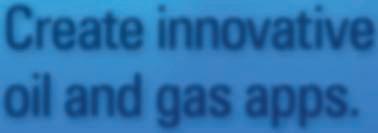

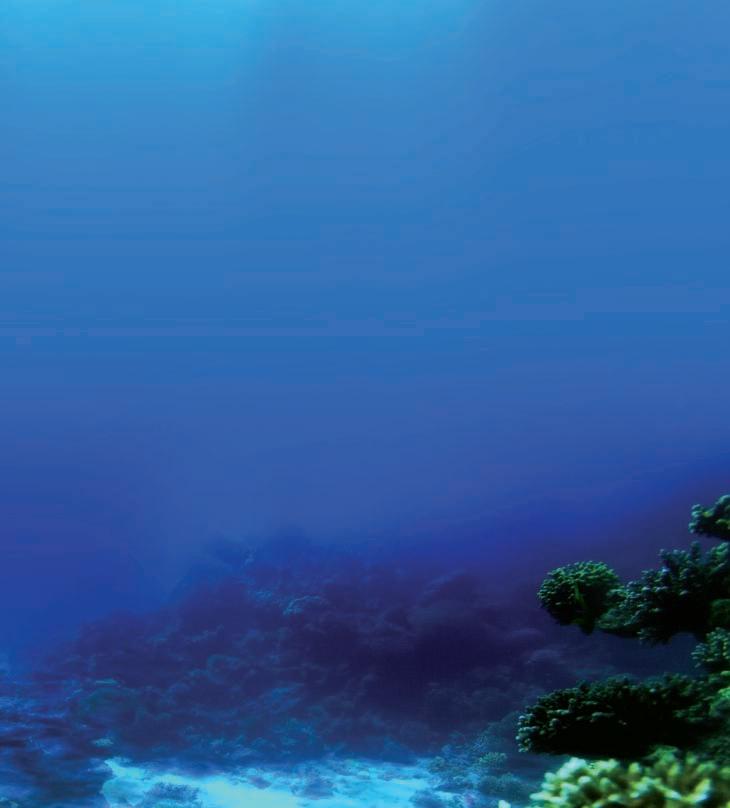
(...Continued from page 15)
being misled as a result of a previous bad experience with a poorly defined parameter.
parameters will change, according to linkage in that one parameter becomes more or less important as another parameter value is change.
derivative approach may be coded, footby-foot, into the petrophysics software package, thereby providing a live-linked uncertainty estimate to the actual, local reservoir properties.


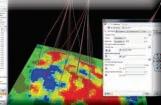


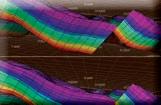


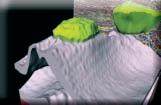
Adams, S. J. 2005. Quantifying Petrophysical Uncertainties. Asia Pacific Oil and Gas Conference and Exhibition, Jakarta, April 2005.
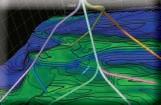


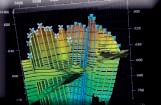




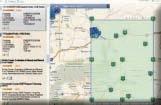


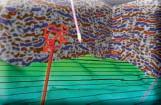


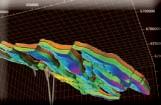


Ballay, Gene. 2001. Multidimensional Petrophysics in the Reservoir Description Division. Saudi Aramco Jounal of Technology, Winter 2000/2001.
Ballay, Gene. 2009. Risky Business, March 2009, www.GeoNeurale.com.

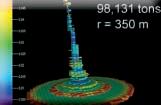

Bowers, M. C. and Fitz, D. E. 2000. A Probabilistic Approach to Determine Uncertainty in Calculated Water Saturation. SPWLA 41st Annual Logging Symposium; June 2000.
Bryant, Ian and Malinverno, Alberto, Prange, Michael, Gonfalini, Mauro, Moffat, James, Swager, Dennis, Theys, Philippe, and Verga, Francesca. 2002. Understanding Uncertainty. Oilfield Review. Autumn 2002.
Burnie, Steve. 2004. Error / Uncertainty and The Archie Equation. Canadian Well Logging Society. Insight.January, 2004.
Case Western Reserve University. Undated. Appendix V of the Mechanics Lab Manual, Uncertainty and Error Propagation (available on-line).
Chardac, Jean-Louis, Petricola, Mario, Jacobsen, Scott, and Dennis, Bob. 1996. In Search of Saturation. Middle East Well Evaluation Review. Number 17.
Chen, C. and Fang, J. H. 1986. Sensitivity Analysis of the Parameters in Archie‘s Water Saturation Equation. The Log Analyst. Sept.Oct., 1986.
Denney, D. 2005. Quantifying Petrophysical Uncertainties. SPE JPT. September.
Diederix, K. M. 1982. Anomalous Relationships
Between Resistivity Index and Water Saturations in the Rotliegend Sandstone (The Netherlands). Transactions of the SPWLA 23rd Annual Logging Symposium, Corpus Christi, Texas, July 6-9, 1982, Paper X.
Focke, J. W. and Munn, D. 1987. Cementation Exponents in ME Carbonate Reservoirs. SPE Formation Evaluation, June 1987.
Freedman, R. and Ausburn, B. 1985. The Waxman-Smits Equation of Shaly Sands: I, Simple Methods of Solution, II Error Analysis. The Log Analyst.
George, Bovan. 2003. A Case Study Integrating the Physics of Mud-Filtrate Invasion with the Physics of Resistivity Logging. MS Thesis. University of Texas. Download from UT site.
George, Bovan, Torres-Verdin, C., Delshad, M., Sigal, R., Zouioueche, F., and Anderson, B. Undated. A Case Study Integrating the Physics of Mud-Filtrate Invasion with the Physics of Induction Logging: Assessment of In-situ Hydrocarbon Saturation in the Presence of Deep Invasion and Highly Saline Connate Water. Download from University of Texas site.
Griffiths, R., Carnegie, A., Gyllensten, A., Ribeiro, M. T., Prasodjo, A., and Sallam, Y. 2006. Estimating Sw with a volume measurement. World Oil, October 2006.
Hill, T. and Lewicki, P. 2007. Statistics, Methods and Applications. StatSoft, Tulsa, OK, http:// www. statsoft.com/textbook/stathome.html.
Hook, J. R. 1983. The Precision of Core Analysis Data and Some Implications for Reservoir Evaluation. SPWLA 24th Annual Symposium, June 27-30.
Limpert, L., Stahel, W., and Abbt, M. 2001. Lognormal Distributions across the Sciences: Keys and Clues. BioScience, v. 51, no. 5.
LSU. Undated. Probabilistic Approach to Oil and Gas Prospect Evaluation Using the Excel Spreadsheet. Found with Google, Author n/a. http://www.enrg.lsu.edu/pttc/.
Sweeney, S. A. and Jennings Jr., H Y. 1960. The Electrical Resistivity of Preferentially Water-Wet and Preferentially Oil-Wet Carbonate Rock, Producers Monthly v. 24, no. 7, p. 29-32.
Thomas, David C. and Pugh, Virgil J. 1989. A Statistical analysis of the Accuracy and Reproducibility of Standard Core Analysis. The Log Analyst, v. 30, no. 2.
Voss, David. 1998. Quantitative Risk Analysis: John Wiley and Sons, New York.
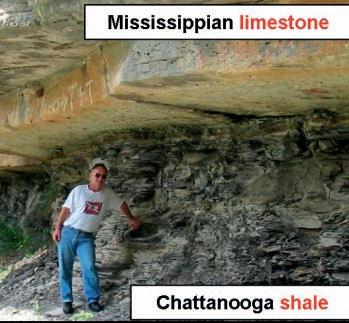
We appreciate the unidentified LSU faculty who posted their material (located via Google) to http://www.enrg.lsu.edu/pttc/.
George Eden (BP Canada) and Larry Maple (ConocoPhillips) generously shared their thoughts, and suggested relevant reference material, as ideas and material on this question were gathered over the past few years.
Stefan Calvert (BG India, E&P) has kindly shared his thoughts and spreadsheet examples, as this overview was put together.
Omissions, typos, etc. remain the responsibility of the author.
R. E. (Gene) Ballay’s 32 years in petrophysics include research and operations assignments in Houston (Shell Research), Texas; Anchorage (ARCO), Alaska; Dallas (Arco Research), Texas; Jakarta (Huffco), Indonesia; Bakersfield (ARCO), California; and Dhahran, Saudi Arabia. His carbonate experience ranges from individual Niagaran reefs in Michigan to the Lisburne in Alaska to Ghawar, Saudi Arabia (the largest oilfield in the world).
He holds a Ph.D. in Theoretical Physics with double minors in Electrical Engineering and Mathematics, has taught physics in two universities, mentored Nationals in Indonesia and Saudi Arabia, published numerous technical articles and been designated co-inventor on both American and European patents. At retirement from the Saudi Arabian Oil Company he was the senior technical petrophysicist in the Reservoir Description Division and had represented petrophysics in three multi-discipline teams bringing on-line three (one clastic, two carbonate) multi-billion barrel increments. Subsequent to retirement from Saudi Aramco he established Robert E Ballay LLC, which provides physicspetrophysics consulting services.
He served in the U.S. Army as a Microwave Repairman and in the U.S. Navy as an Electronics
Technician, and he is a USPA Parachutist and a PADI Dive Master.
Copyright 2009 Robert E Ballay, LLC
Headquartered in Munich, Germany, GeoNeurale is a center for excellence in earth science research and training, as applied to both hydrocarbon and geothermal reservoir characterization and evaluation.
GeoNeurale’s Malm 2010 Research Project involves an international team of scientists, each with at least 20 years of experience, integrating geology, geophysics, petrophysics, geostatistics, neural networks, and artificial intelligence for static and dynamic simulation of the Bavarian Malm.
GeoNeural is also engaged in the development and delivery of specialized training courses. In the last two years, scientists from 17 countries and 31 companies or universities have attended their presentations.

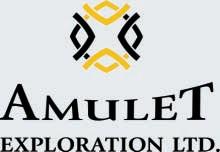
Over 20 years of expertise
Meaningful geophysical maps Geology-driven seismic models Client-tailored & confidential
For more information: Karen Brawley Rogers, P. Geoph. (403) 969-7793 karen@amuletexploration.com
www.amuletexploration.com
| by Tannis McCartney
Five graduate students from the Department of Geoscience at the u niversity of Calgary were recently awarded an all-expenses paid trip to attend the American Association of Petroleum Geologists (AAPG) Annual Convention in New Orleans, April 9-14, 2010, to take part in the International Finals for the Imperial Barrel Award (IBA) competition.
The IBA, run annually by the AAPG since 2007, had 57, five-member teams competing from six international regions around the world and six sections from within the u S, with the winners from each of the 12 areas earning their place in the International Finals in New Orleans. This is the third year the Canada Region of the AAPG has participated in the IBA, with the u niversity of Alberta winning the Canadian regional competition in 2008 and Memorial u niversity winning in 2009.
The journey for the four Canadian teams participating this year began in January 2010 when they received their dataset, which included 2D and 3D seismic and well data from four wells. Teams had eight weeks to do a complete evaluation of the data and put together a presentation with their proposed potential reservoir targets, prospects, and reserve sizes. This required a study of the regional geology (in this year’s case the Danish sector of the North Sea), the stratigraphy and structural geology, and an understanding of the regional petroleum system for the identification and analysis of drilling prospects.
On March 19, 2010 the four Canadian teams, representing Memorial u niversity, u niversity of Western Ontario, u niversity of Alberta, and u niversity of Calgary, gave their presentations to a panel of five judges in the boardroom at the CSPG office in Calgary. The winning u niversity of Calgary team of kevin Jackson, Ross kukulski, Dallin Laycock, Erin Pemberton, and Virginia Vera left a strong impression with the judges with their presentation, earning first place. Memorial u niversity took the runner-up spot.
In the New Orleans finals, the students

from the u niversity of Calgary faced tough questions from the judges, who were impressed that they identified a play it had taken seasoned North Sea geologists “ten years to figure out.” First place in the International competition went to the winners of the European Region, the team from Institut Français du Pétrol (IFP) of France. For their second place finish, the u niversity of Calgary team won the “Selley Cup” and $10,000 in scholarship money. This prestigious result is the highest a Canadian team has placed since the inception of the global IBA competition.
The first-year M.Sc. students on the
u niversity of Calgary team received course credit for their participation in this project, and team member Ross kukulksi was quick to note that “we learned more about all aspects of a petroleum play from this project than from any single course.” Teammate Dallin Laycock also noted that the work they did leading up to their presentations, at the Canada regionals and the New Orleans finals, were a more effective job-preparation exercise than a regular course would have been. Each member of the team had an aspect of the project to specialize in, and one of the things Virginia Vera found most rewarding about the project was the fact that the team members often had different ideas,

but their discussions ultimately brought everything together into a final product of which they were all proud.
The winning Canada team benefited from suggestions received during practice presentations to their research group and previous IBA Team members. The advice from the team’s faculty advisor, Dr. Stephen Hubbard, and other professors in the department, was important leading up to the regional competition in March. Erin Pemberton commented that the feedback from the judges in Calgary was invaluable in preparing the team for the final presentation in New Orleans.
kevin Jackson indicated that all members of the winning team were honoured and privileged to be able to represent Canada at the international level, noting that their success gives the Department of Geoscience at the u niversity of Calgary credibility amongst internationally recognized petroleum schools and reflects well on everyone in the department. The fact that a different university has won the Canada Region competition for each of the three years participating in the Imperial Barrel Award speaks to the strength of geoscience programs in the country as a whole. In 2008, the u niversity of Alberta placed fourth in the global finals and last year Memorial u niversity stepped onto the podium in third place. u nder competition regulations, next year’s teams must be composed of entirely new groups of students, and Stephen Hubbard said the bar has been raised for all Canadian
and sounds of New Orleans. They are grateful to everyone who has supported and sponsored them throughout the competition, especially David Dolph of Nexen Petroleum International and AAPG Canada Region President, who has been instrumental in bringing this competition to Canada for the last three years.
The Canada Region competition could not be possible with the generous support of sponsors, which this year included Nexen, Husky, Shell, Talisman, Exxonmobil, CSPG, CSEG, and the AAPG. Judges for the Canada Region competition volunteered their time and did a great job providing feedback and encouragement to the teams. Thanks to k rista Solvason (Nexen Inc.), Joan Carter (Exxonmobil), John Varsek (Cenovus), Murray Gilhooly (Husky), and Jon Noad (Shell) for doing a wonderful job judging.
teams, who must now aim to put Canada in first place internationally.
With the competition out of the way, the students from the u niversity of Calgary were able to celebrate with the sights







Never underestimate the value of a good translator. Nothing lost in translation. So much gained. Clear, precise geological definition for conventional and non-conventional reservoirs. www.oilsandsimaging.com
100, 1100-8th Avenue SW, Calgary, AB T2P 3T8
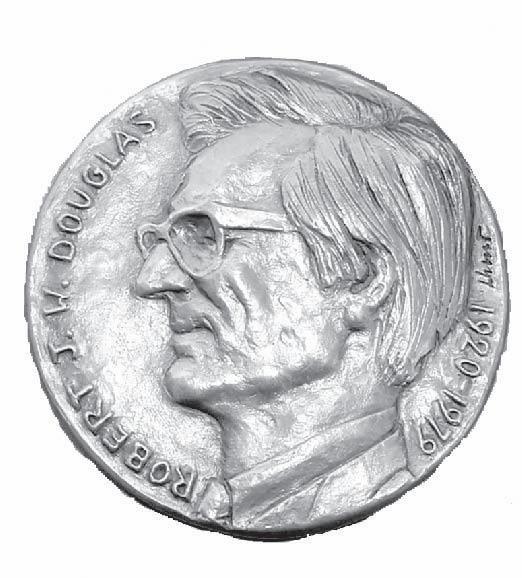


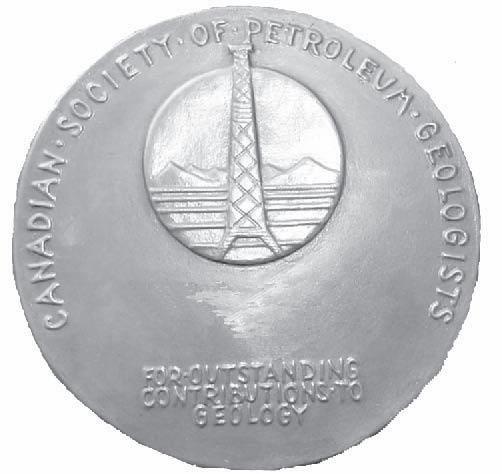
| by Andre Chow
Sponsored by:
The CSPG Graduate Thesis Awards are presented annually for the best Ph.D. and M.Sc. theses either originating from a Canadian university, regardless of project location, or dealing with a Canadian sedimentary/ petroleum geology topic, regardless of university location.
CSPG gratefully acknowledges and appreciates the continued support from ARC Financial Corporation in their sponsorship of the Graduate Thesis awards.
The winner of the 2009 Ph.D. award is Hasley L. G. Vincent (Dalhousie university, Prof. Grant Wach, supervisor) for his thesis entitled “Cenozoic Sediment Dispersal Patterns Across Trinidad, West Indies.” Dr. Vincent’s dissertation takes a classical approach to scientific work with multiple streams of data and analysis layered and developed concurrently prior to any interpretation or conclusion. All data presented are thoroughly explored prior to interpretation.
The Cenozoic section in Trinidad represents the progressive evolution of a passive continental margin into an oblique foreland basin during the Late Oligocene. Deepwater sedimentary processes are characteristic of early basin development, all associated with Paleogene slope environments. The transition from slope to shelf environments occurred during the Early Pliocene evidenced by a more diverse facies suite, and this continued into Pleistocene terrestrial environments.
Vincent’s dissertation successfully attempts to document temporal changes in depositional environments, sediment sources, and basin settings along the northeastern margin of South America. This was accomplished by evaluating information from multiple sources of data (outcrop and subsurface). A thorough review of previous work is followed by sedimentological descriptions of core and outcrop, facies analysis, ichnology, sandstone petrology, heavy mineral analysis, and biostratigraphy. The dissertation is both thorough, and complete, and is well written and appropriately illustrated.
Vincent has demonstrated the value of an integrated sedimentological approach towards basin analysis in general, and Trinidadian
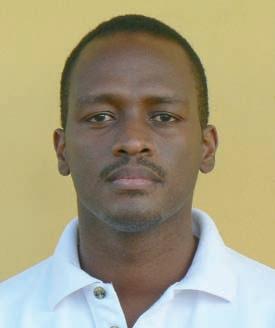
stratigraphic evolution in specific. Trinidad has long been known informally as “the graveyard of geologists.” CSPG members working on the incredibly complex – and fascinating –geology of Trinidad or the elsewhere in the southern Caribbean, are encouraged to read this dissertation. This work is likely to serve as the standard reference for Trinidadian Cenozoic geology for the next 20 years.
The winner of the 2009 M.Sc. award is Cindy C. Robinson ( university of Calgary, Prof. Ron Spencer and Prof. Steve Larter, supervisors) for her thesis “A Multidisciplinary Approach to Evaluating Shale Gas Potential in a Biogenic System: the upper Colorado Group Shales in Southeastern Alberta.” Her thesis is an excellent, detailed, multi-disciplinary examination of all the relevant aspects for properly evaluating the potential of a shallow, biogenic shale gas play (which is significantly different from a deeper, thermogenic play).
Shale gas resources occur in continuous, selfsourced, low permeability petroleum systems, each of which displays unique controlling factors. Therefore, individual shale gas plays must be evaluated with imagination and in great geological detail to properly and efficiently assess the economic possibilities before proceeding too far into an exploration program.
Robinson’s study successfully attempts to achieve this understanding by providing information from multiple sources of subsurface data, including a full review of previous work, core sedimentological description and palynology, a complete suite of geochemistry data, gas content and composition analysis, petrophysics and rock mechanics, permeability and pore size analysis, and others. The depth and
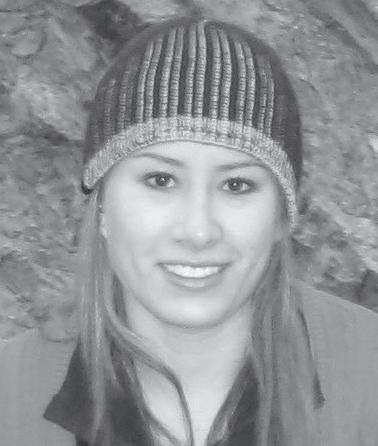
thoroughness of the research, and the completeness of the presentation, are strong aspects of this thesis.
The abundant technical data and scientific analysis are wrapped together with good illustrations and writing skills, a practical approach, and discussion of applicability and future recommendations to present a comprehensive, coherent and timely summary of information and investigative methods useful to exploration/production efforts currently underway in many Canadian basins. This study has immediate relevancy to active industry programs that are important in the present and future attainment of unconventional gas resources of Canada. CSPG members working on shallow biogenic shale gas plays, or contemplating such, are encouraged to review this thesis to understand potential approaches to what may be possible in these demanding plays.
Many thanks are extended to all the members of the Graduate Thesis Awards Committee for taking time out of their very busy schedules to evaluate this year’s theses. Their patience and dedication especially in these uncertain times never ceases to amaze me. Also thanks are extended to Pengrowth Corporation for their support. Our committee welcomed the return of Richard Evoy and added Andrew Willis as a new member of the committee this year.
The committee is always looking for members interested in reading and judging theses. Participation provides members with an opportunity to keep up to date with current university research. If you are interested in serving on next year’s committee, please contact Andre Chow or any of the other committee members for additional details.
| by David Caldwell, 2010 Mixed Golf Chair
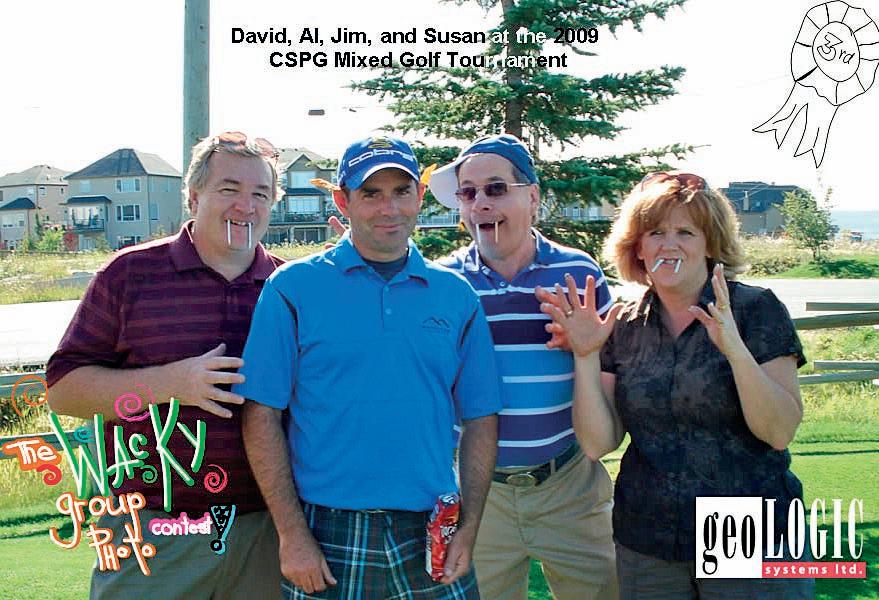
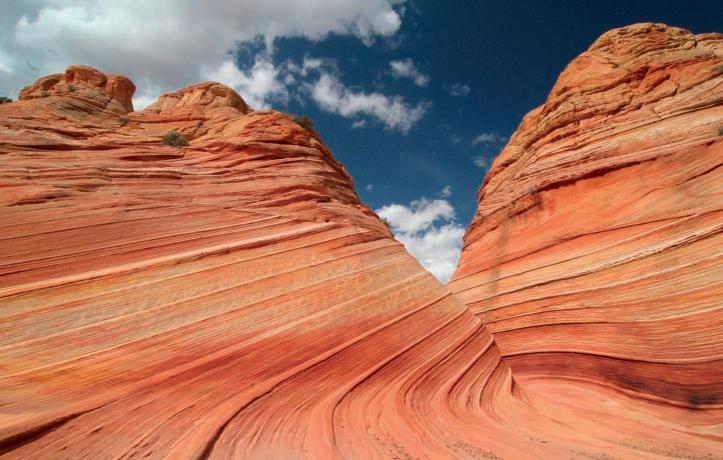
If you are looking for a great way to spend a Friday, then join us Friday, August 27, 2010 for the CSPG Mixed Golf Tournament. We are entering our 21st year and will be back at Lynx Ridge Golf Club in the northwest part of Calgary. We had another great year in 2009, selling out all 136 spots in the tourney. While some sponsors dropped out due to poor economic times, other generously increased their donations, while new sponsors jumped aboard.
Great weather conditions and great golf course conditions were the theme of last year and we hope they continue again this year. With such an e arly start to the golf season, course conditions should be incredible by late August. As always, sponsorship opportunities are available through the CSPG office (contact Alyssa Middleton at (403) 513-1233) or by contacting David Caldwell at (403) 852-5571 or david@commandequipment. com. Five par 3 spots are sold every year to sponsors who want to have face-to-face time with clients or prospective members of the Canadian Society of Petroleum Geologists. Our tournament is typically comprised of 75-80% members, with the remainder of golfers being people from service companies, sponsors, or other earth scientists.




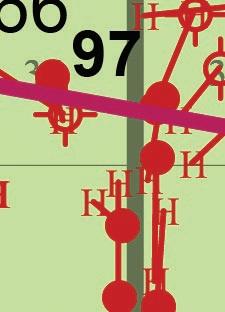
again raised the 50/50 and Mulligan tickets that went towards helping careers in earth by the CSPG office handing out sleeves of golf balls as for important back next year on Friday August 27th at Lynx Ridge Golf Course. To register for this tournament, visit the Mixed Golf page on CSPG’s website at http://www.cspg.org/events/
www.cspg.org
21st ANNUAL MIXED GOLF TOURNAMENT
FRIDAy, AUGUST 27, 2010 - LyNX RIDGE GOLF CLUB
Format: Modified Texas Scramble, shotgun start at 8:00 am. Teams will be assigned according to handicap or average score. This is a fun tournament open to both men and women. Registration includes a Continental Breakfast, Dinner, Green Fees, and Power Carts.
Registration Deadline August 6, 2010 (Priority will be given to CSPG Members). CSPG Members: Register online at http://www.cspg.org/events/events-social-golf.cfm. Non-Members and Guests: Mail or fax your form to CSPG’s office (contact information below).
CSPG - Member # □ Non-member
Name:
Company:
Address:
Phone (daytime):
Phone / Cell (evening):
Email: □ Male □ Female Club Handicap or average 18-hole score:
Guest Name: (One guest allowed per CSPG Member)
Male □ Female Club Handicap or average 18-hole score:
Please note: A waiver must be signed by EACH participant five business days prior to the Mixed Golf Tournament. A waiver form registration will be removed from the tournament. All registrations must be accompanied by full payment. All cancellations or Phone requests will not be accepted. The cancellation or amendment must be received by 4:00 pm on August 13, 2010. A 15%
For more information, contact Brenda Pearson at 403-206-3339 or David Caldwell at 403-852-5571.
$ 90.00 Member
$ 130.00 Non- ember / Guest
will be distributed to you once your registration form has been processed. If a waiver is not signed prior to the tournament, your amendments to registrations must be received in writing via email to Brenda Pearson at bpearson@birchcliffenergy.com. cancellation and administration fee will apply. m
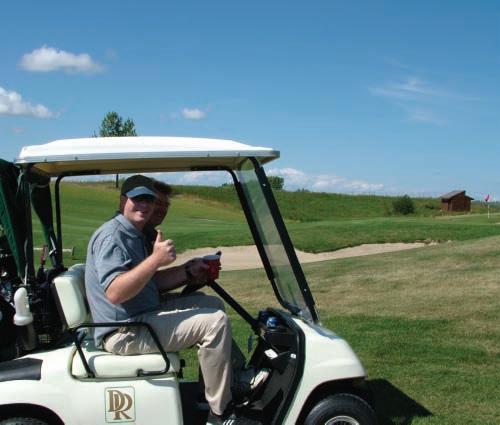
Extra Meal Ticket (Non-playing guests. Maximum 10 spots; first-come, first served.)
TOTAL (GST Included. GST # 118836295)
□ Cheque/Money Order (Payable to CSPG)
Expiry:
Signature:
Canadian Society of Petroleum Geologists
Attn: Mixed Golf Tournament
600, 640 – 8 Avenue SW Calgary, Alberta T2P 1G7
Phone: 403.264.5610 Fax: 403.264.5898
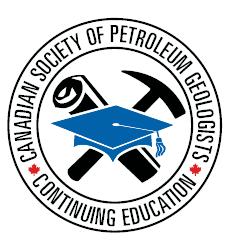
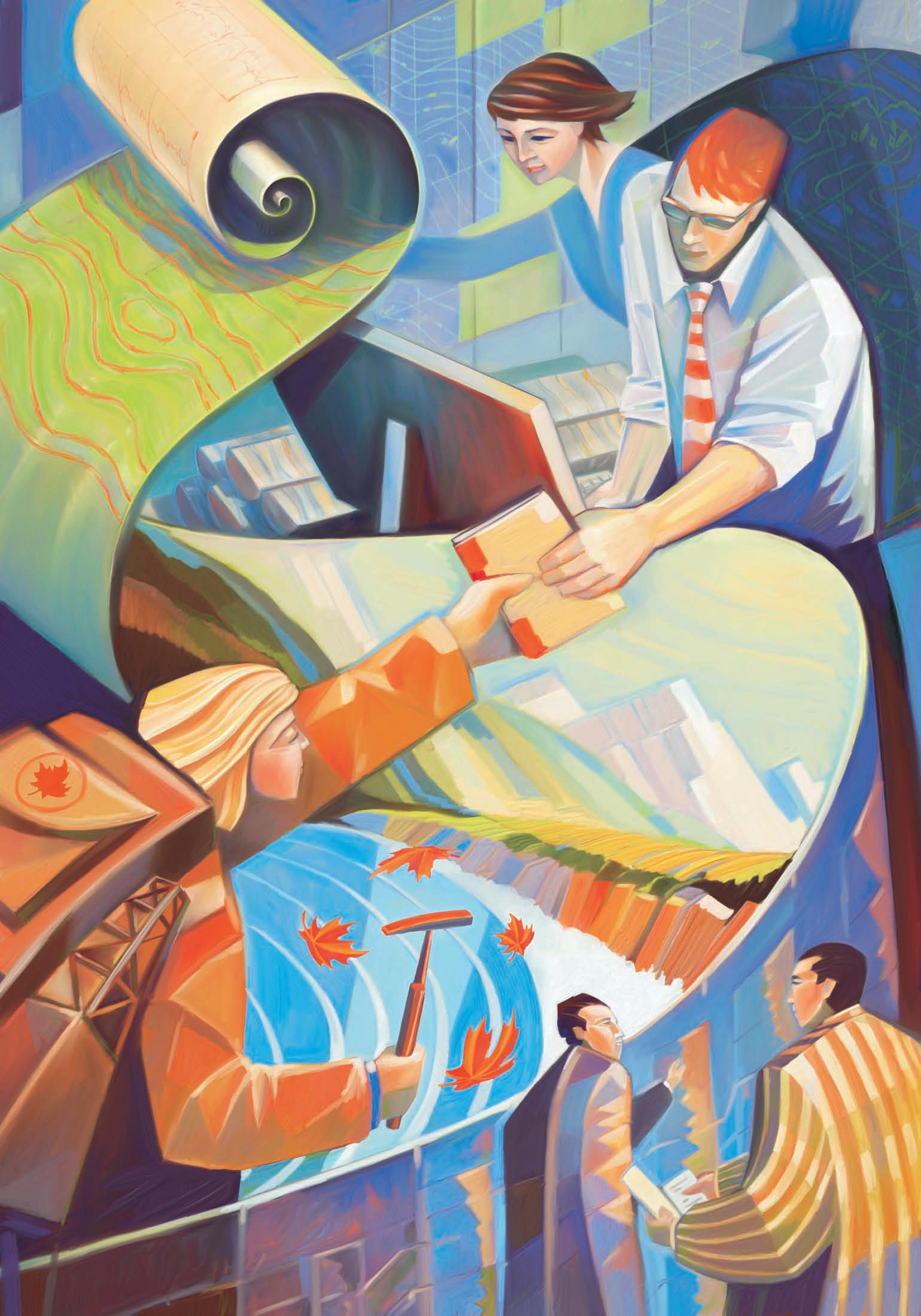
WWW.CSPG.ORG
www.cspg.org/education/education-trips.cfm
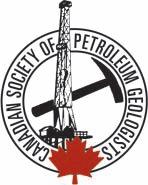
CSPG Continuing Education Committee is proud to offer the Summer/Fall Field Trip Seminar Series. Offering local one- to three-day field trips running in and around Calgary.
Stratigraphy and Hydrocarbon Potential of the Bakken Formation in Western Montana
Instructor: Ted Doughty
Contrasting the Reservoirs of Braided vs. Meandering Depositional Systems
Instructor: Jon Noad
Upper Cretaceous Meander River Deposits Exposed in the Dinosaur Park Badlands
Instructor: Derald Smith and Peter Putnam
Structure and Hydrocarbon Occurrence, Rocky Mountain Foothills and Front Ranges
Instructor: Kirk Osadetz, Glen Stockmal, and David Kisilevsky
For additional information please see the website at: or contact: www.cspg.org/education/education-trips.cfm
Amanda Mitander at amitander@tridentexploration.ca
Erik Parker at eparker@petrelrob.com

Thank you to all the volunteers on the Organizing Committee who made GeoCanada 2010 a success!
Steering Committee
General Co-Chair (CSPG)
Mark Cooper
General Co-Chair (CSEG) Andrew Holder
General Co-Chair (CWLS)
John Nieto
General Co-Chair (GAC) Jeff Packard
General Co-Chair (MAC) Ed Ghent
General Co-Chair (CFES) Ian Young
General Co-Chair (CCPG) Ollie Bonham
General Co-Chair (IAH-CNC) Steve Grasby
teChniCal Committee
Technical Prog. Lead Chair (IAH-CNC)Larry Bentley
Technical Prog. Chair (CSPG)
Technical Prog. Chair (CSEG)
Technical Prog.Chair (CWLS)
Technical Prog. Chair (GAC)
Technical Prog. Chair (MAC)
Technical Prog. Chair (CFES)
Technical Prog. Chair (CCPG
Technical Prog. Communications
Technical - Poster Displays
Posters Committee
Posters Committee
Technical - Core Conference
Core Committee Co-Chair
Core Committee
Core Committee
Core Committee
Core Committee
Awards and Judging
Awards and Judging
Regan Palsgrove
Graham Carter
Reigh MacPherson
Keith Dewing
Rajeev Nair
Elisabeth Kosters
Ollie Bonham
Dave Clyde
Darren Singleton
Dara Welch
Fa-Linn Woollings
Brian Zaitlin
Rich Harris
Lana Sharp
Pat Jans
Chris Podetz
John Suter
Gary Taylor
Sarah Cutten
organizing Committee
Exhibits
Exhibits Committee
Exhibits Committee
Exhibits Committee
Exhibits Committee
Exhibits Committee
Flo Reynolds
Chris McGregor
Craig van Dongen
Darryn Listwan
Judi MacDonald
Wade Whitlow
Exhibits Committee LaToya Graham
Finance
Marketing (Media)
Public Outreach
Public Outreach
Society Meetings
Special Events
Special Events
Sponsorship
Volunteers at Large
Gary Drebit
Laura Brick
Fran Haidl
Greg Lynch
Lisel Currie
Natalie St.Hilaire
Kristi Gartner
Brian Kulbaba
Val Topolniski
Short CourSe/Field trip CoordinatorS
Field Trips/Short Courses
CSPG Con.Ed. Co-Chair
CSPG
CSPG
CSPG
CSPG
GAC
GAC
GAC
MAC
IAH-CNC
CWLS
CSEG
Travis Hobbs
Carrie Jeanes
Julia Baumeister
Debbie Legaspi
Tyrus Bender
Amanda Mitander
Jeff Packard
Carolyn Relf
Alex McNeil
Rob Raeside
Steve Grasby
Nicole Lehocky
John Fernando
| by Peggy Hodgkins
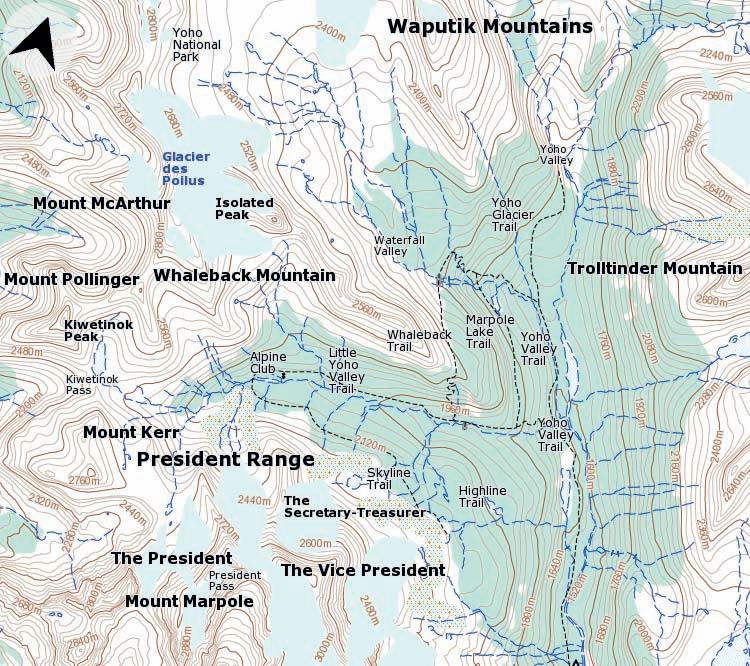
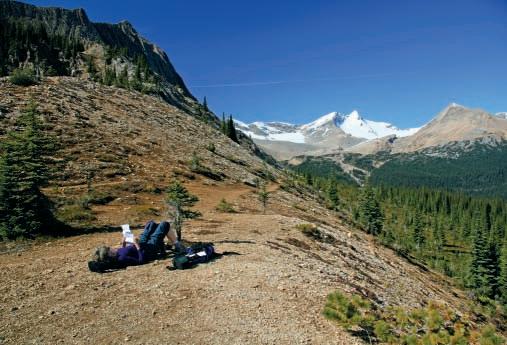
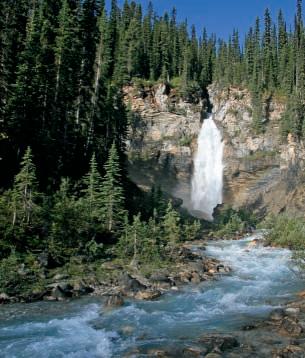


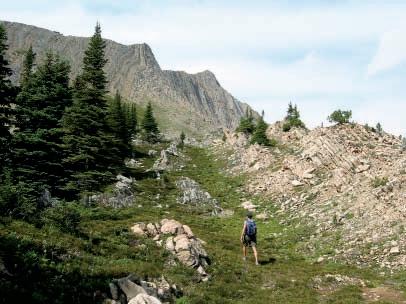
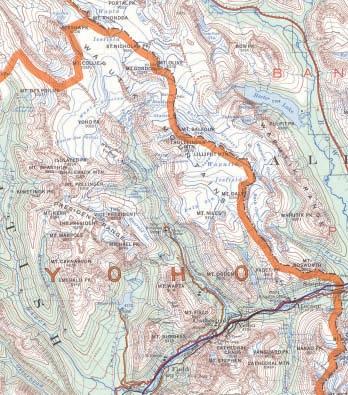
Trailhead: Takkakkaw Falls parking lot at the end of Yoho Valley Road, Yoho National Park.
Distance: ~20 km (16 km on Park trails, ~4 km off trail).
elevation Gain: 900 m
• Mainly follows the well-used Yoho Valley, Whaleback, and Little Yoho Valley Trails.
• The Whaleback trail only reaches the lower nose of the feature. Scrambling up to the ridge of the Whaleback offers a unique geologic ridge walk that includes an impressive structural fold, icefields, and the toe of a glacier.
• From the ridge, the view to the north opens up to expose the edge of the Waputik Mountains and Icefield, which strattles the continental divide. The icefield drains to the BC side by Yoho, Ayesha, and Glacier des Poilus which give rise to the Yoho, kicking Horse, and Blaeberry Rivers.
• The southern exposure of the Whaleback is nondescript, but the northern face, as seen from the ridge, exposes a large fold in the Cambrian Sullivan (calcarous shales) and Waterfowl (silty limestone) formations.
• Isolated Peak is a prominent sight as you walk along the Whaleback. Named by Edward Whymper in 1916 because the mountain is “isolated” between the Yoho peaks and the Balfour Group.
• Once down from the Whaleback ridge, much exploring can be done at the toe of the Glacier des Poilus.
• Following runoff from the glacier, a return trail leads back down into Little Yoho Valley.
Isolated Peak
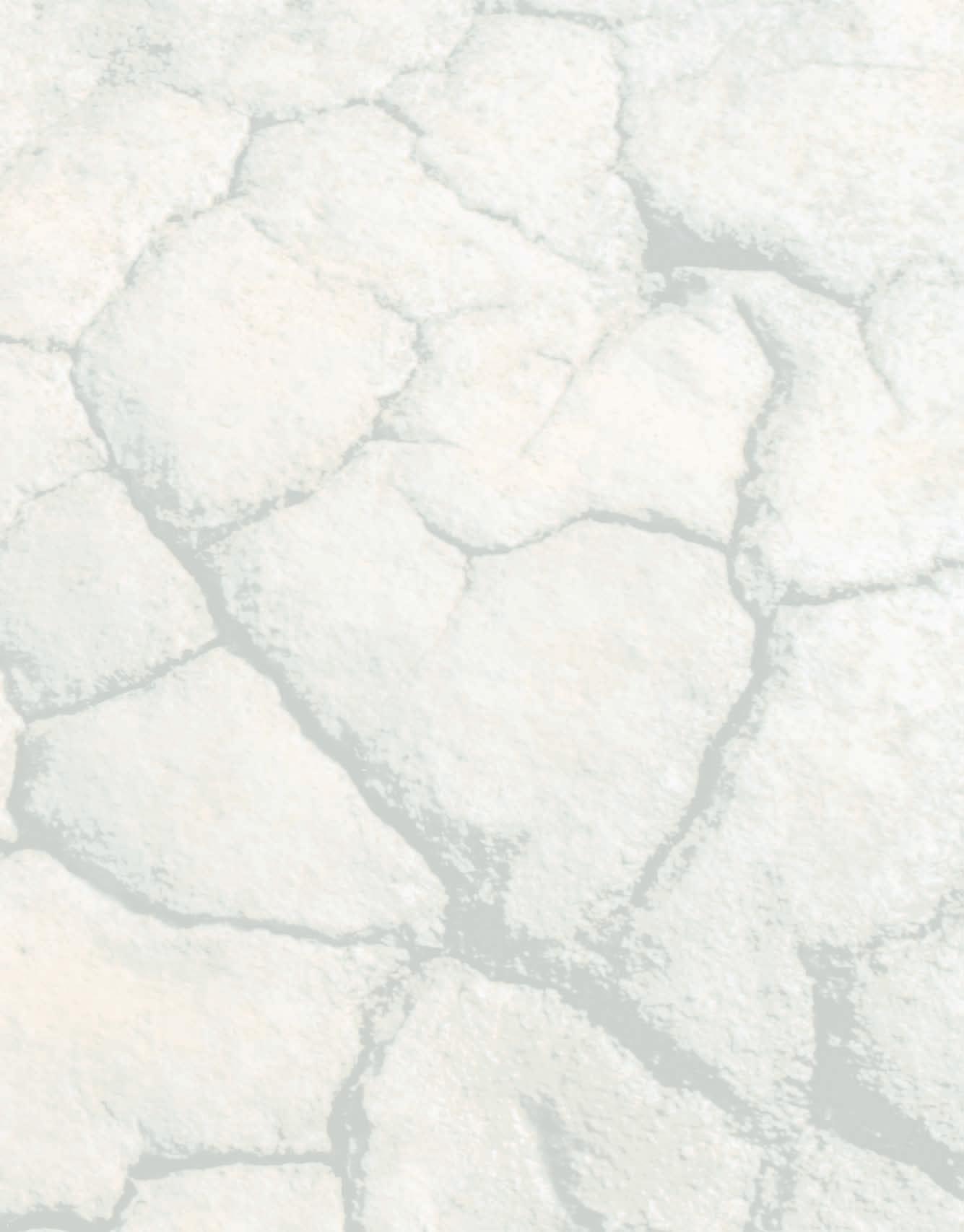

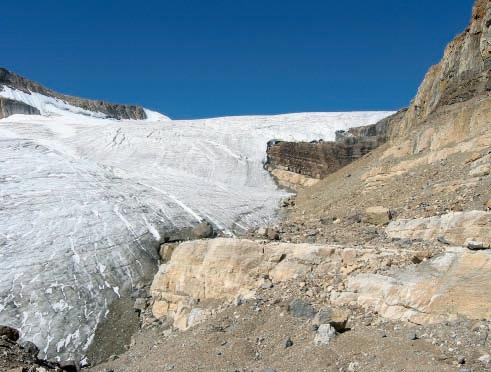
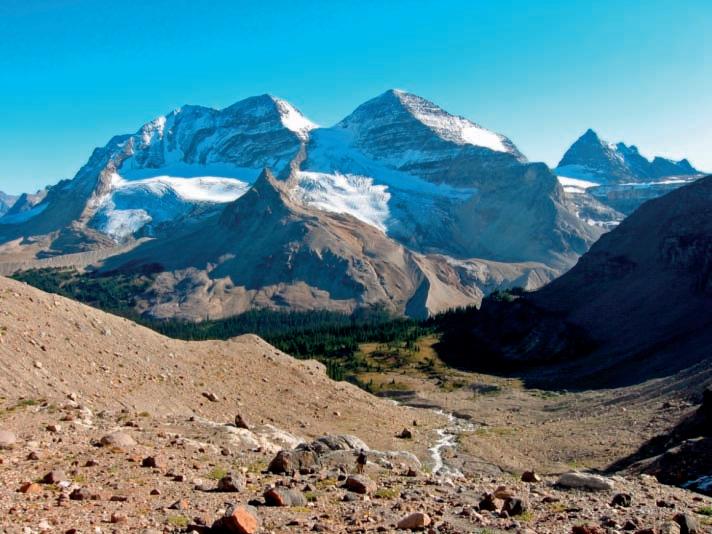
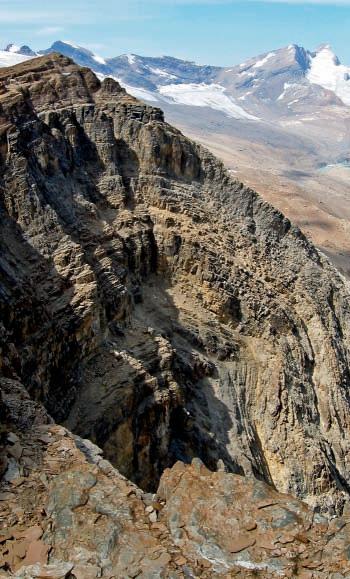
Limestones and shales

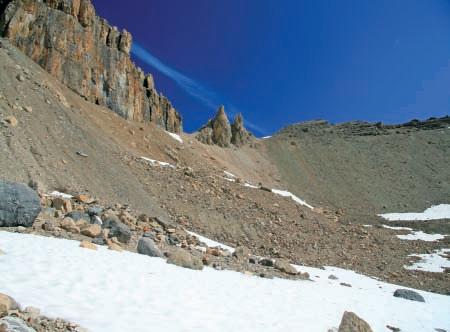
| by Roger Edgecombe
Although I am relatively new to Calgary, I have worked in the seismic industry for more than 13 years. As most people in Calgary’s oil and gas industry recognize, the demographics of the city are changing. As the city has grown, an influx of young professionals, ‘straight out of school’ have joined us as colleagues and I hope my story will serve as a valuable lesson to those who have not worked in the field, and as a reminder to those who have, of the preventable incidents that can occur in the seismic industry.
My seismic career has taken a path similar to many: out of grad school I started to work for a small seismic company in Ontario and, although I had never planted a geophone before, I found myself leading a crew of four guys, shooting five refraction spreads a day in Nova Scotia. upon my return to Ontario, I was assigned the position of Juggie, Observer, and Party Manager for our five-man seismic crew. As employees of a small company, we all wore many ‘hats’ and were trained on the job by more experienced crew members whose prime objective was to get the job done as quickly and efficiently as possible.
As will become evident, the safety culture in which new workers are trained has a direct bearing on how situations are evaluated and
how decisions are made, and this played a major role in the evolution of the events leading to my incident.
Approximately five years into my seismic career, I was tasked with managing two simultaneous projects in Ontario. As usual, once the surveyors completed one project they moved to the second and were followed by the drills. After the first drill start-up, I moved to the second project with the surveyors and a second drill crew.
One day I received a call from our driller – a man with more than 20 years experience – who said that he could not find locations for four shot points and told me where he was going to skid and offset them to. knowing his experience and knowledge of the area, I agreed, and requested that he mark the shot points offset on the drill logs. On the last day of recording I received a call from the Observer stating that the shooters could not find the four shot points in question. unfortunately, like many of the day, our very experienced driller was notorious for making his drill notes on the back of a cigarette pack and then transcribing them to a drill sheet in the evening. Attempts to change this behaviour were met with… “I’ve been doing this for how long, and you for how long?” Needless to say, the drill
logs were often wrong. So it was no stretch to the imagination that these particular drill logs were wrong or that the shot points had not been drilled. The recording crew assumed that the shots were not drilled, and demobilized.
A few days later I received an e-mail from the permit agent requesting a meeting on site. He indicated that during his inspection he found evidence of four undetonated shot points, and I agreed to meet him at noon on June 7th, 2001.
On the evening of June 6th I drove from Fort Erie to Hamilton where my girlfriend (at the time) and I signed the papers for our first house and celebrated with friends. Everything seemed to be good in the world.
On the morning of the June 7th, I woke up, loaded my two dogs into the truck, and set off to meet the permit agent. I arrived 15 minutes early and, believing that I had a good idea of where these shot points were located, I decided to investigate.
using the small clumps of dirt left behind from the source points, I easily located the line, and parked where the line intersected the concession road. Once on-line I went north to the corner of


the field and quickly identified the four rogue source points. Much to my surprise, there were no leads at the surface to indicate that these holes were live. I proceeded to dig around the top of the first shot and found some lead wires. The lead wires were neither shunted nor coiled, as if the shooters had taken the shots and walked away. “These source points are LIVE” I thought to myself! Once I realized that, my first concern was for public safety. After years of detonating small charges at 20 feet depth, not once did my own safety cross my mind.
I immediately went to my truck, grabbed a battery from a flashlight and went back to destroy the charges. I unearthed the leads and hooked up the first hole. The charge detonated with a small thud! I proceeded to the second charge. I dug up enough leads to connect the battery. BOOM! In less than the blink of an eye I had been thrown into the ditch!
I was alive...but I knew I was in TROuBLE. My eyes were filled with dirt, I could not see. I knew that I had both my hands, but after that I wasn’t sure. I could squint enough to see blood, I thought that I had blown a hole clear through my right hand. Although I knew I was seriously injured, I felt no pain. My body had gone into shock. I knew that I needed to get help; luckily my cell phone was in my back pocket. I was lying on my back but managed to reach my cell phone with my left hand and set it on my chest.
I nestled the phone on my neck…nothing. The key lock was on! I managed to punch in the code and tried again. It was ringing. Once I got a hold of the office, I told them where I was and that I needed medical attention. Once the permit agent arrived... he went into shock. I must have been a sight to behold. I told him to put the dogs in the back seat of the truck, put me on the tailgate, and drive me to the hospital. He hesitated. I had to yell, “Just do it!” Finally he put me on the tailgate of my truck and drove me to the hospital.
In the small community hospital they cut off my clothes and ran two bags of saline into each one
of my eyes in an attempt to flush some of the dirt. The doctors immediately transferred me to a major facility in London, ON. I will digress…
There are two very fortunate circumstances that shaped the outcome of my story. The first was that I was in proximity of an excellent medical facility; the second is that one of the leading hand clinics in Canada is located in London. The seriousness of my condition was made clear while waiting in the hospital for surgery, when I had to sign forms giving the hospital permission to amputate. Signing the papers with my mouth only added to the gravity of the situation.
I entered surgery at 5:30 pm Thursday evening and awoke six hours later with 15 pins in my right hand and three in my left thumb, having shattered almost all of the bones in my right hand, lost all of the soft tissue off the back of my entire hand, and broken my left thumb in three places. For the next two months, I was essentially bedridden, with nursing care three times a day to change dressings, etc.
While in the hospital, I met with the Occupational Health and Safety investigator and during our conversations he explained how breakdowns in communication lead to accidents. According to him it takes approximately seven breakdowns in communication until there is the potential for someone to get seriously and/or fatally hurt.
For the longest time it was not clear what had caused the incident. Six months after the incident, a crew manager was cleaning up the shop and opened an unmarked bag of trash. Inside the garbage bag were the standard flagging and pin flags, and, shockingly, some lead wires that had shunts still attached. The crew manager realized that this bag of trash was from the site where I was injured, and he proceeded to extend the leads, determining that one of the leads was over 17 feet long.
As it turns out, the permit agent found the undetonated charges, tried to pull them out of the ground, and, when they wouldn’t come out; he cut the leads with a shovel. As a result, the
second charge was only two feet under my feet and the shallow explosion left a four-foot crater where I had stood.
There are many people without any field experience advancing in seismic careers. Although today we work and live in a safetyfocused environment, I think a reminder of the dangers of how we collect seismic data is important.
As often stated, hindsight is 20/20. Eight years later when I reflect on the root causes of my incident, would I have approached the situation differently? Absolutely! Examination of the contributing factors, quickly identify the breakdown in communication, the role of complacency developed from a poor safety culture and the lack of proper training. But what about the role of the permit agent, why was he in a position to affect the safety of others. Clearly a lack of training contributed to his decision to try and pull a live charge from the ground and then proceed to cut the leads with a shovel. Had a proper shooting line been utilized to destroy the charges, would the end result have been different?
The actions we all take in performing our daily tasks have the possibility to affect others. The clear message is the importance of proper training and education, and that we should not get complacent in the daily activities that we perform. It is my hope that people recognize the importance of a strong safety program and that this story helps others to make a change in behavior, attitude, and thinking.
I live with a daily reminder of my incident. Some people notice my hand and ask me what happened. What happened was that I had 11 reconstructive surgeries on my right hand, suffered from post-traumatic stress disorder for a year and a half, and I am still scared to plug in a toaster (another story – let’s just say morphine dreams are very clear).
I would not wish what I have been through on my worst enemy and I am one of the lucky ones.
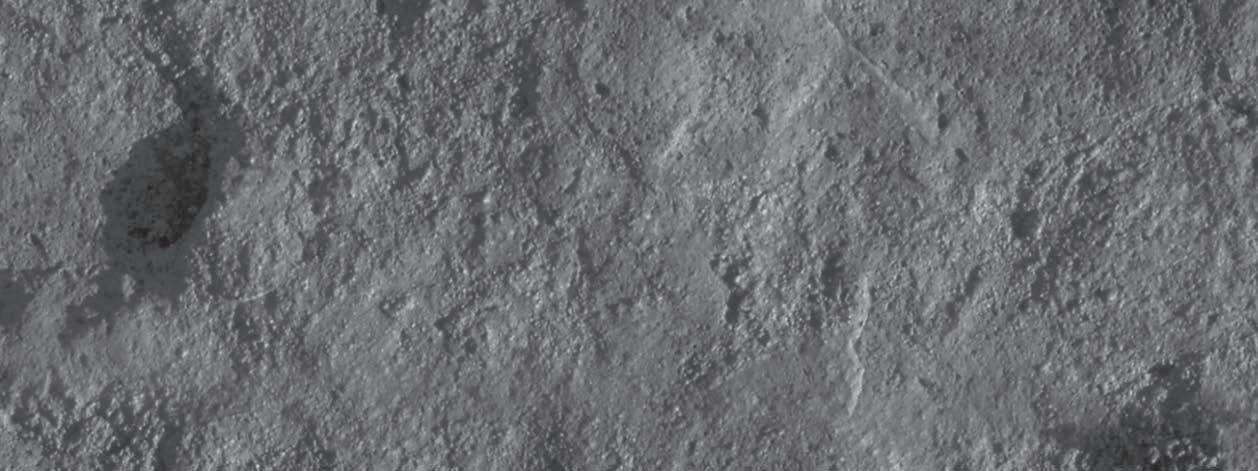
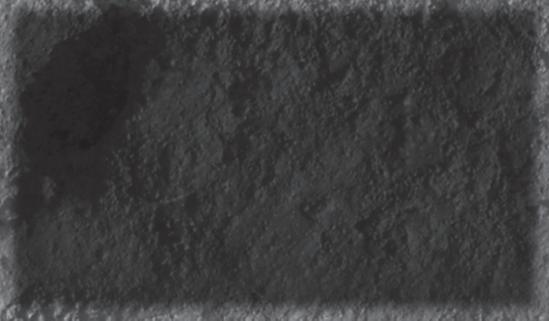
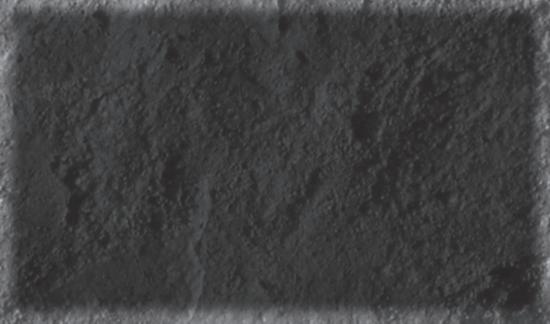
| by Kasandra Klein
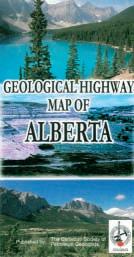
It’s back for 2010! The Geological Highway Map of Alberta has just been revised and updated. It is now available for sale in CSPG’s bookstore at $10 for CSPG members.
Features of The Geological Highway Map of Alberta include:
• Basic geological concepts such as the geological cycle, plate tectonics, and glaciation
• The impact of resource industries on the Alberta economy
• Detailed maps of the highway routes through the Rockies
• Detailed stratigraphic columns
• A map of basement tectonic elements
• Cross-sections of the geology
• Photographs and diagrams of key geological features with brief explanations
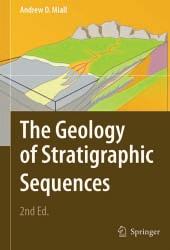
by Andrew D. Miall
This book is on sale now at $85 for CSPG members. Miall’s book is essential reading for professional geologists who are involved in coal, gas, and petroleum geology as well as hydrology. The Geology of Stratigraphic Sequences situates sequences within the broader context of geological processes so that geoscientists are better equipped to extract the maximum information from the record of sequences in a given basin or region. It also stresses a deductive approach to geology placing the evidence before the model, making this a must read for all students of geology.
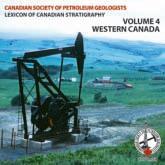
LEXICON OF

C ANADIAN STRATIGRAPH y, VOLUME 4 W ESTERN C ANADA
$40 for CSPG Members. NOW IN STOCk! This volume contains 1,178 alphabetically ordered, informal and formal entries ranging in age from Precambrian to Recent. The lexicon is intended to provide an initial reference for those seeking information on specific stratigraphic units. This popular publication is being presented in CD-Rom form, operated using Adobe Acrobat with the following features: interactive table of contents (click on a formation name to view its entry), fully indexed, searchable, copy and paste feature, and printable.
W ESTERN C ANADA SEDIMENTARy BASIN: A C ASE HISTORy
$22.50 for CSPG Members. NOW IN STOCk! The book integrates surface and sub-surface work, incorporates some of the latest research results and, with over 250 illustrations and extensive references throughout, provides a comprehensive introduction to the WCSB and an example of Basin Analysis. This book is a great use to both students and professional geologists.
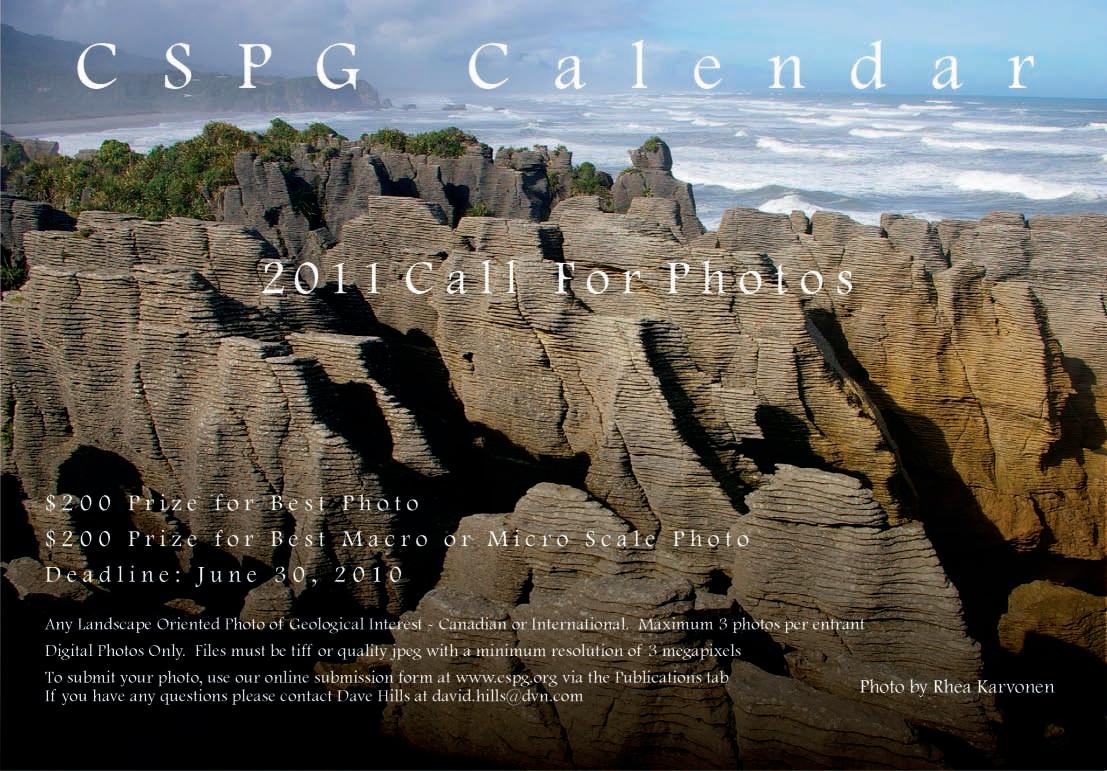


THANK

Only an unbiased comparison reveals the optimal conveyance method for your formation evaluationneeds.
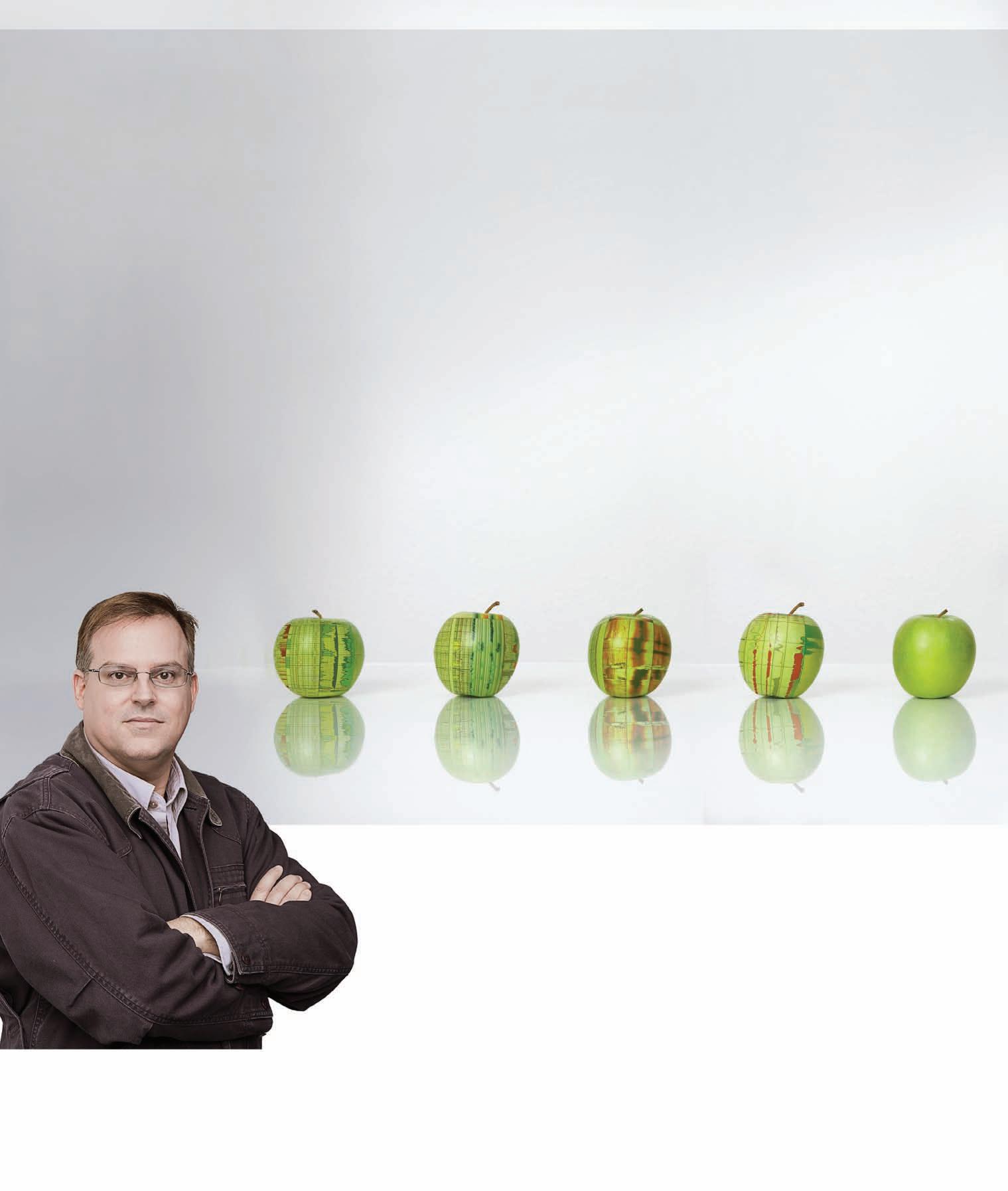
Maximizing reservoir production while minimizing development costs can be a complex journey. The experts from Halliburton will collaborate with you all along the way, beginning with an approach to formation evaluation that’s free from preconceived acquisition preferences.All methods are considered—wireline, logging while drilling, surface data logging, sub-surface testing, coring or a combination of technologies—with only the most value-added method being proposed.
What’s your challenge? For solutions, go to Halliburton.com/ofe.